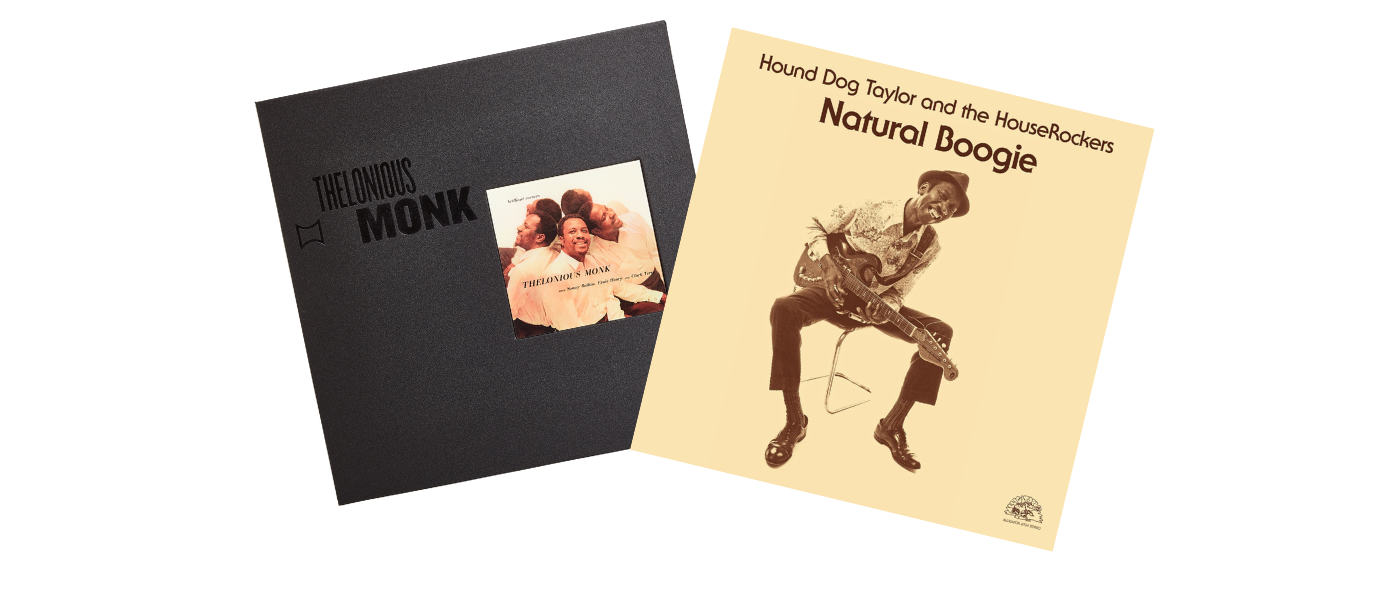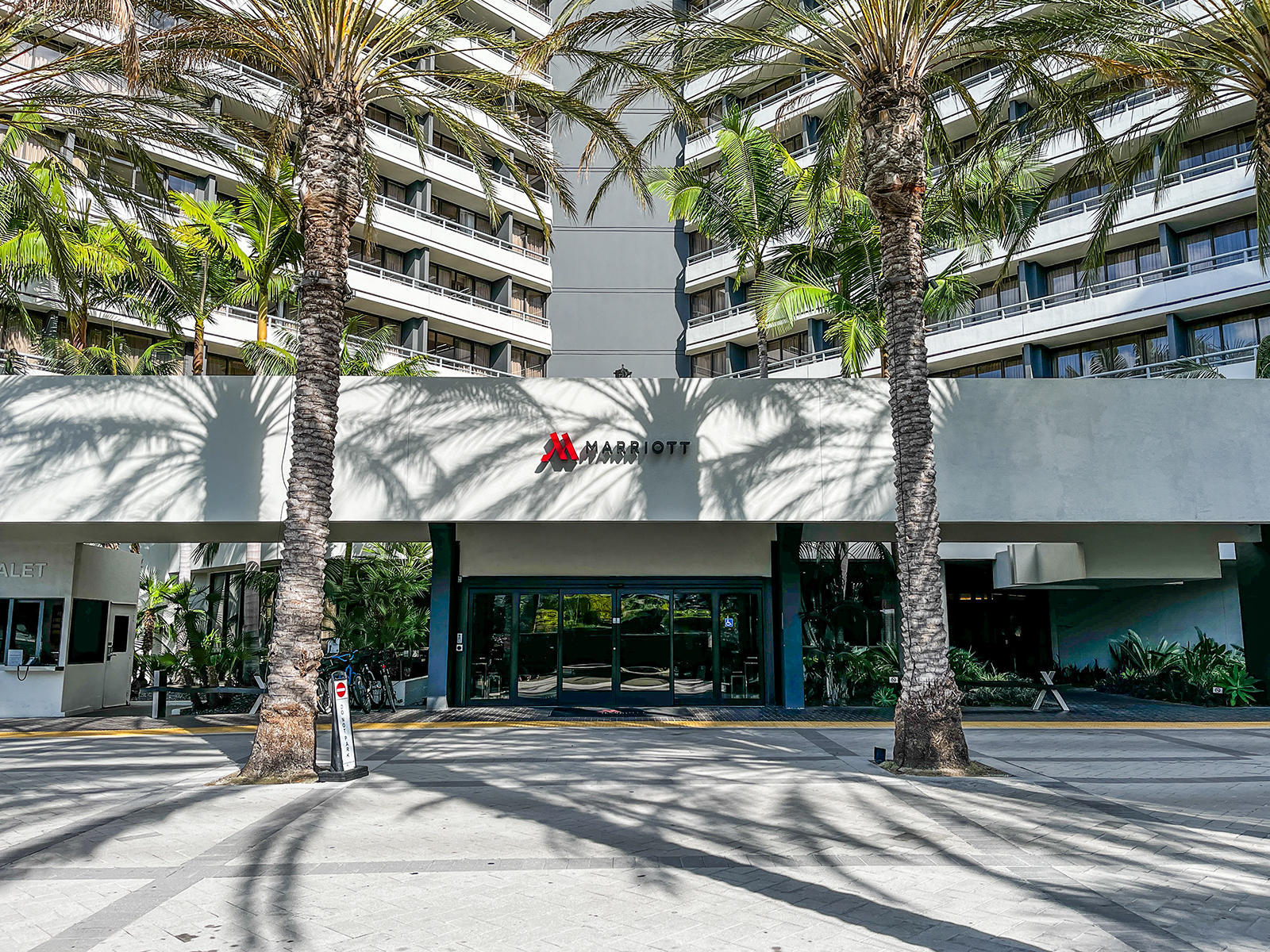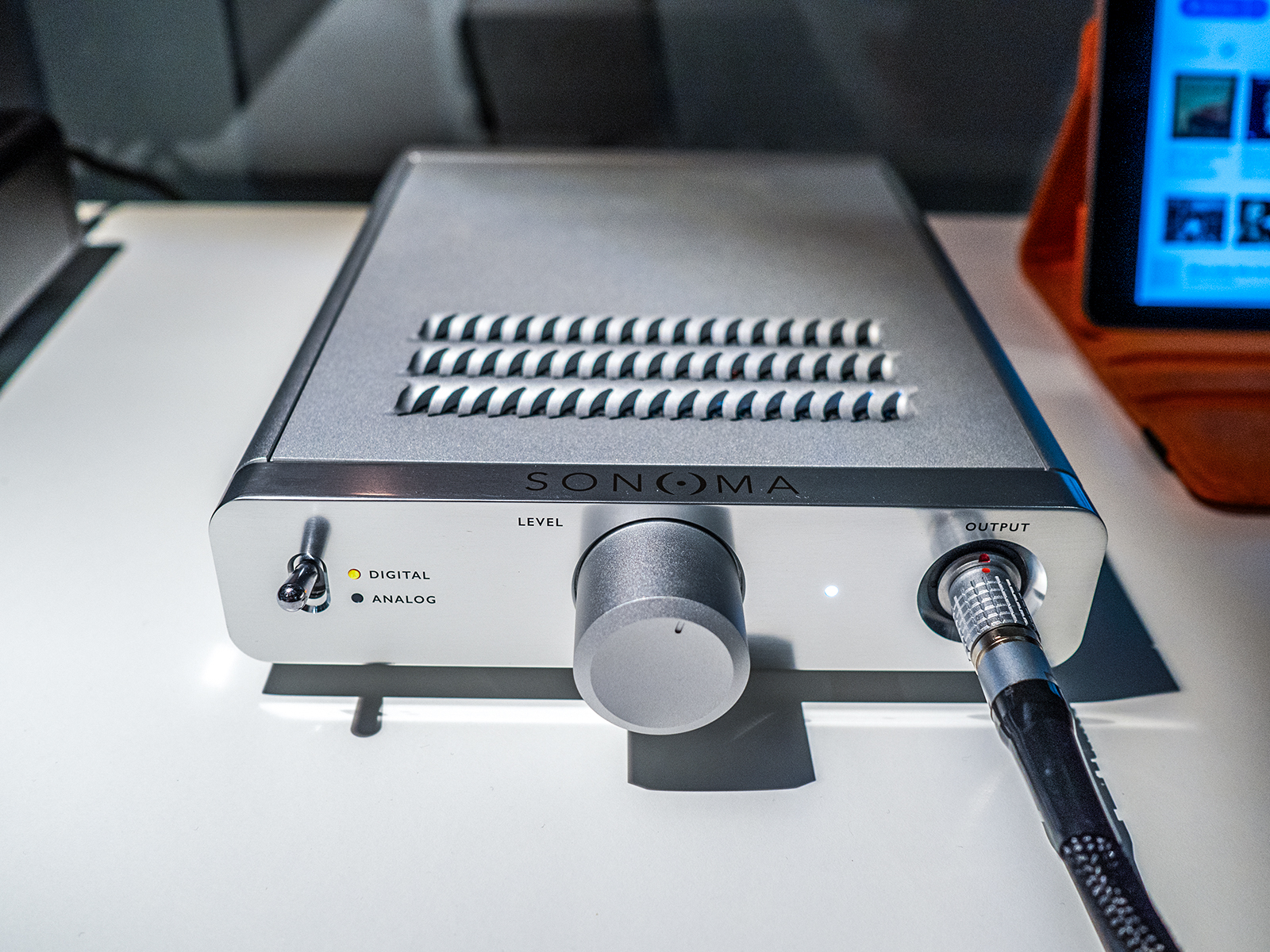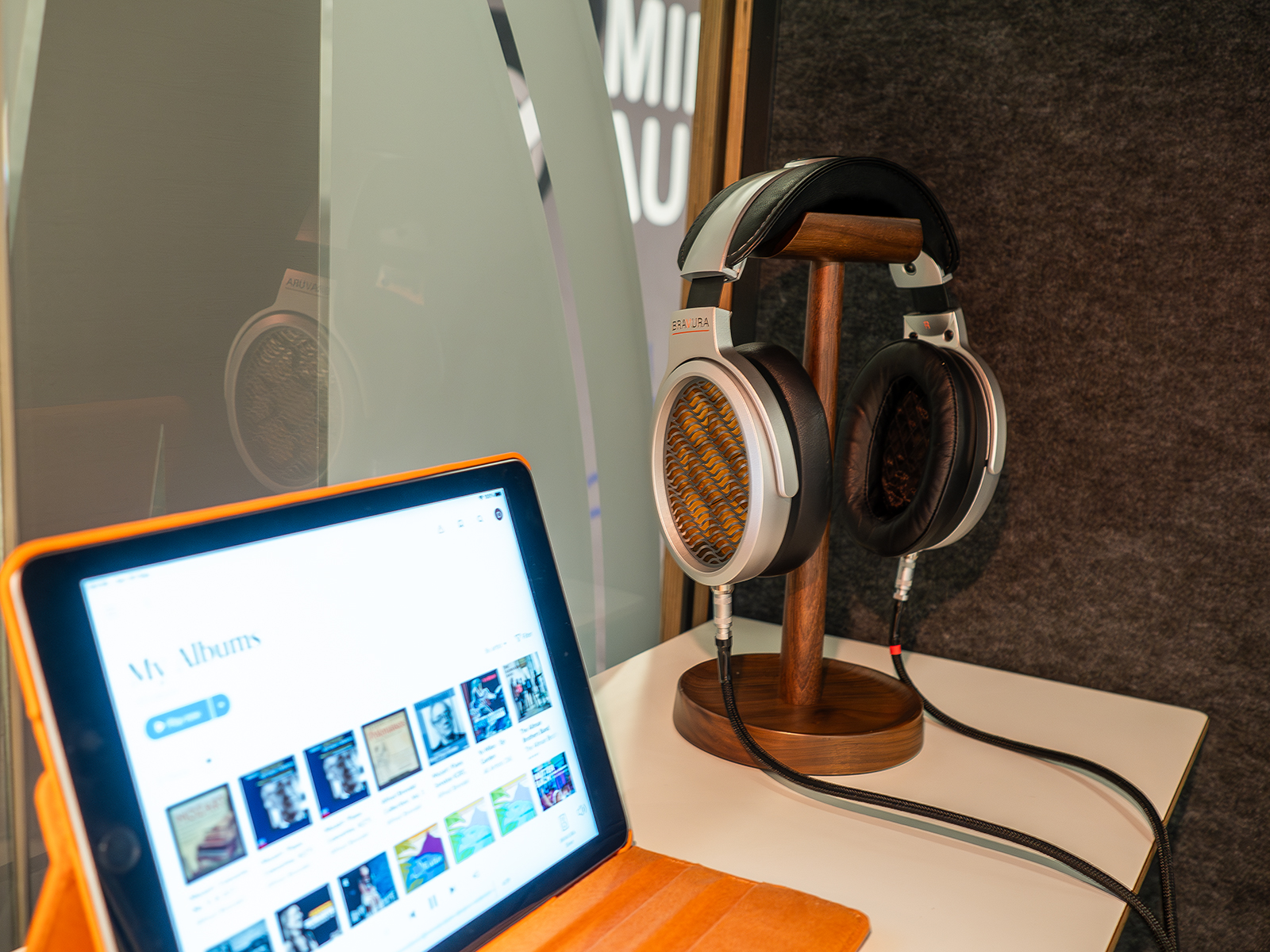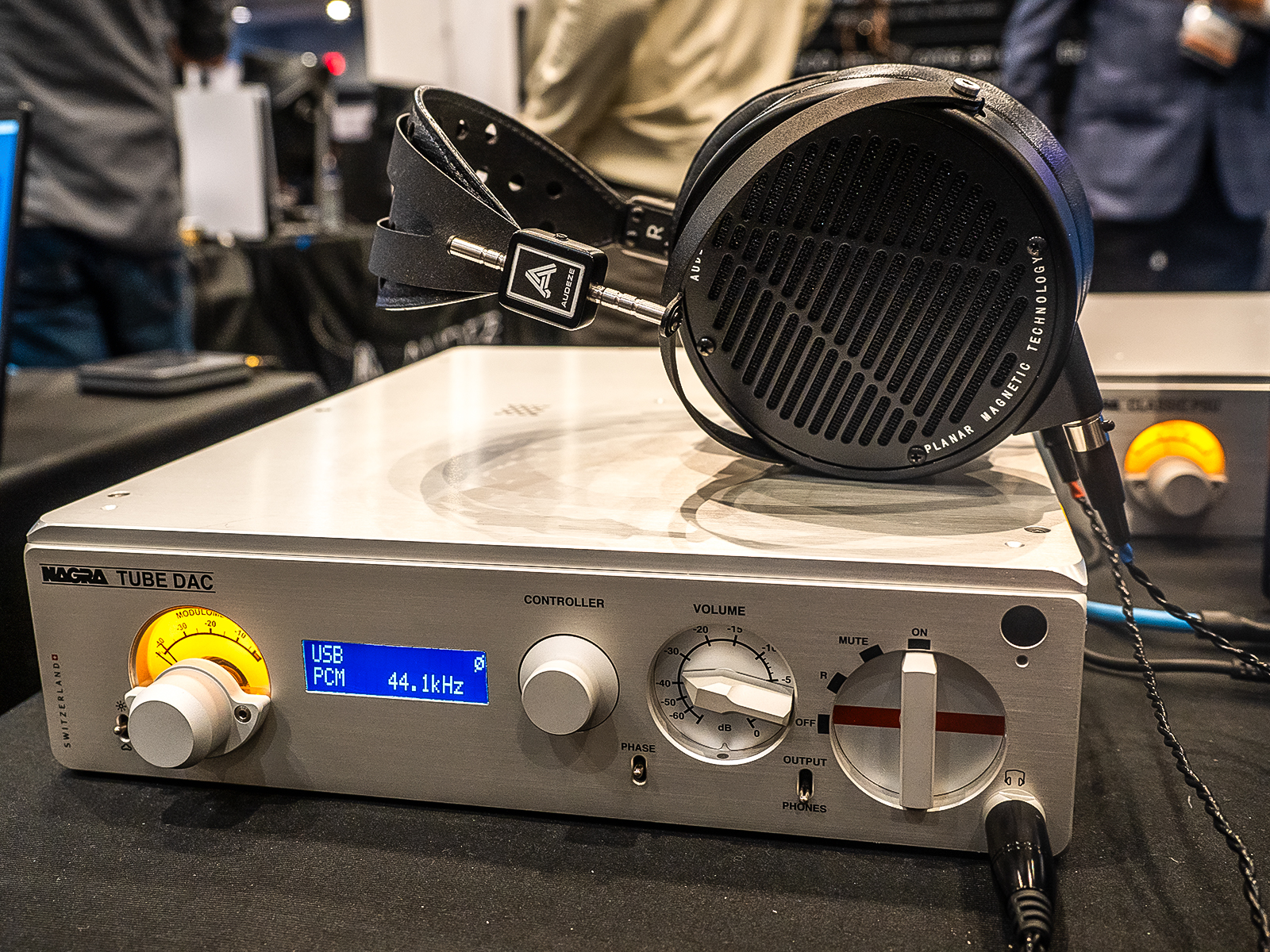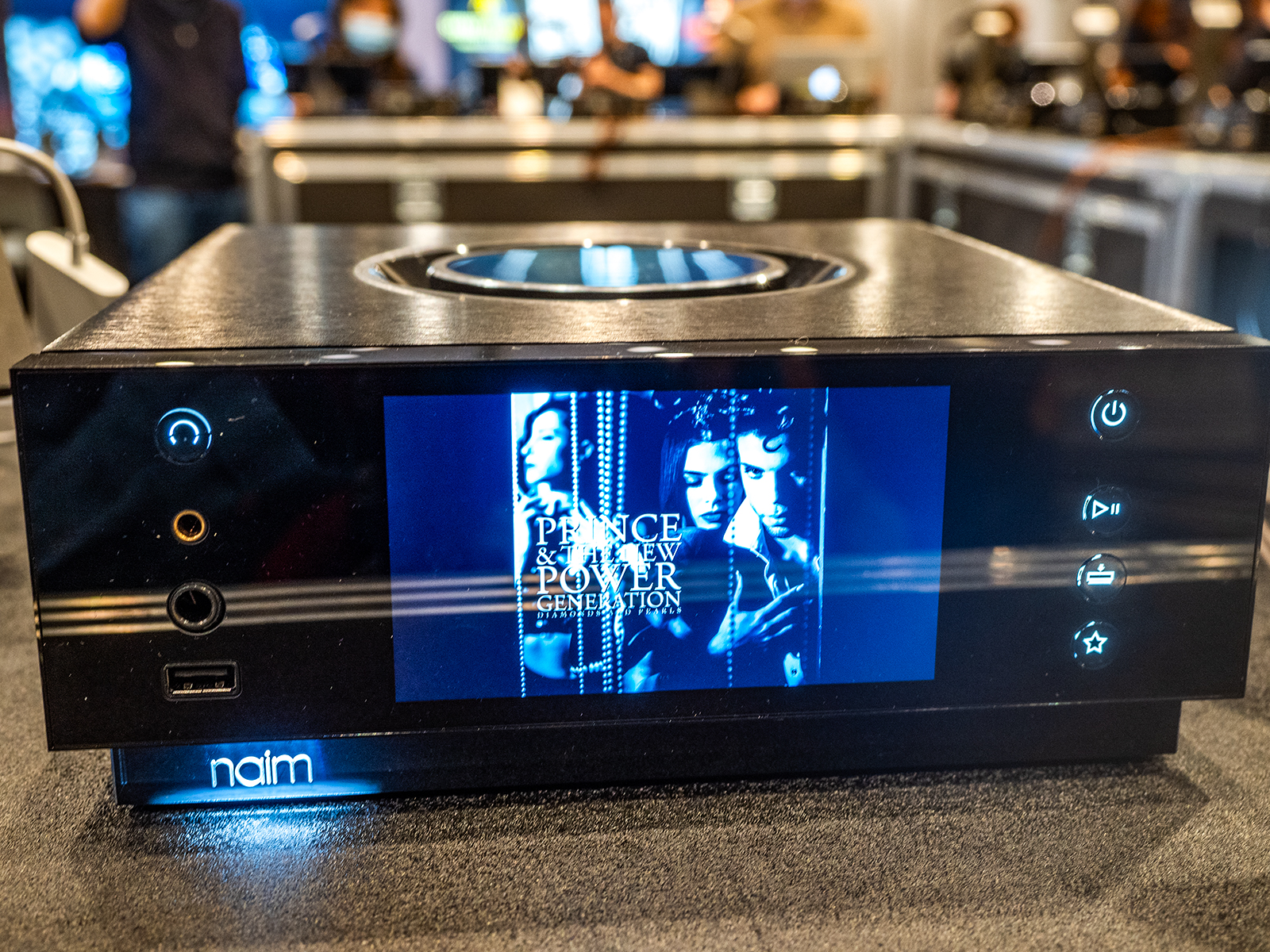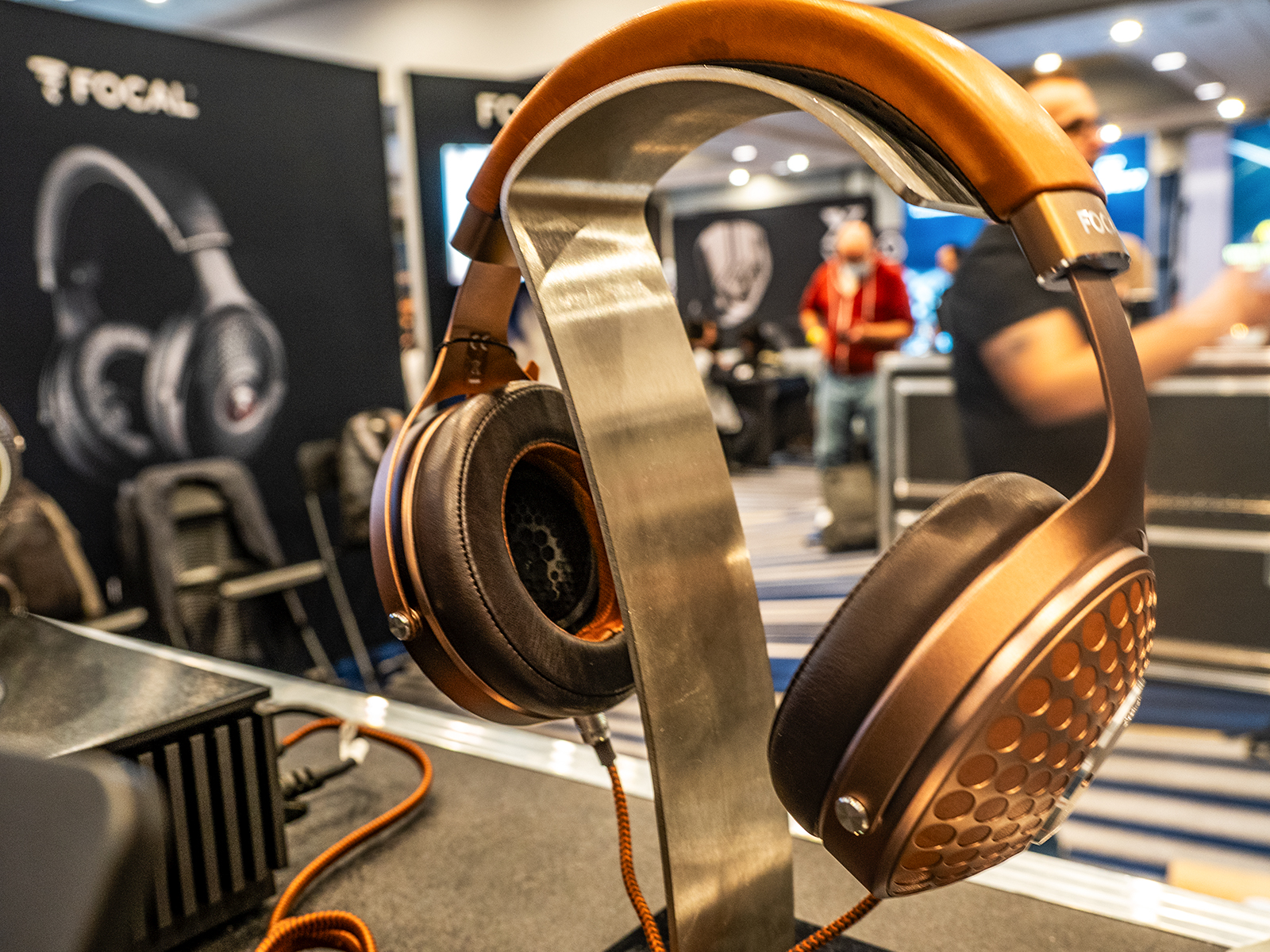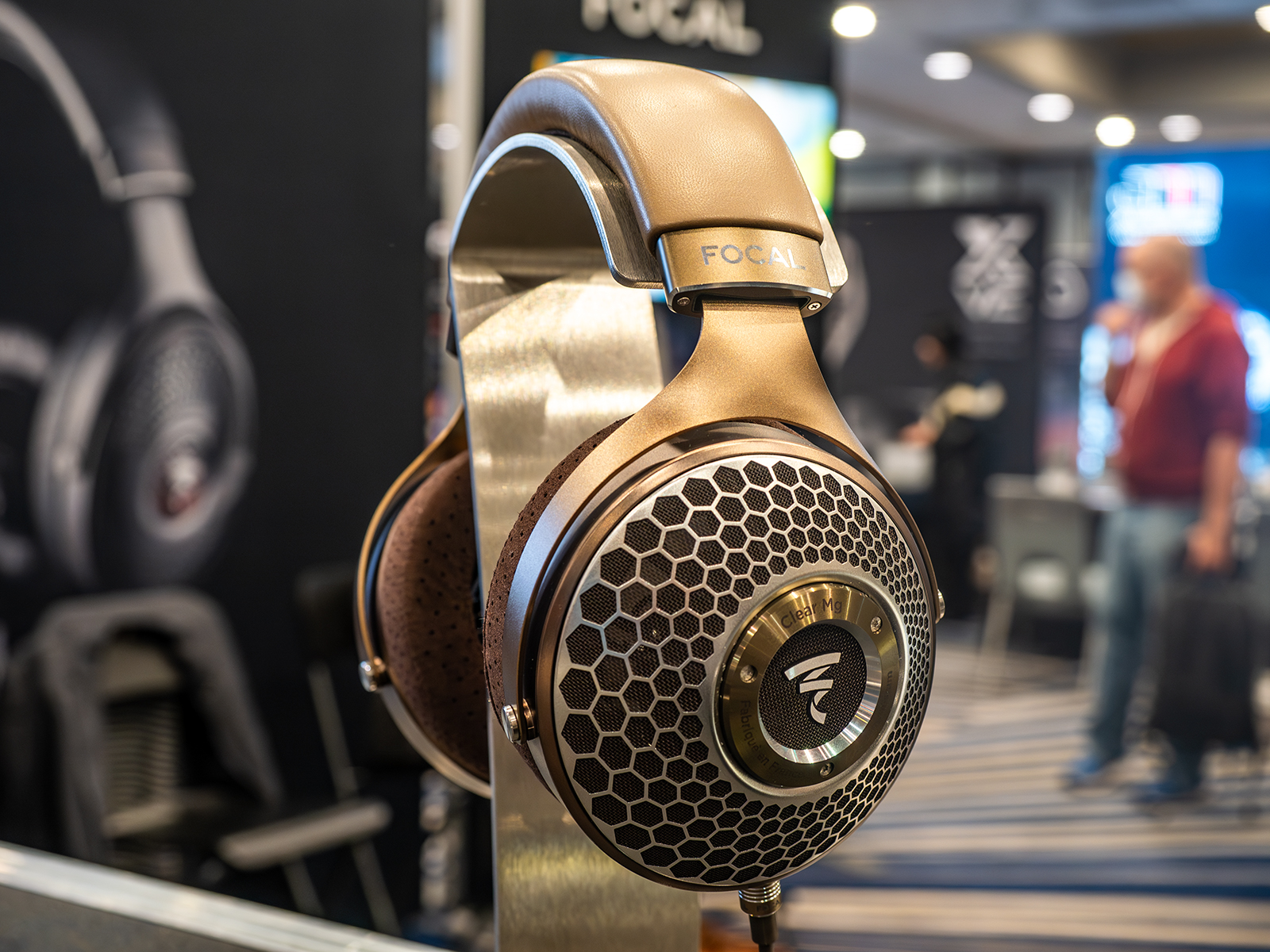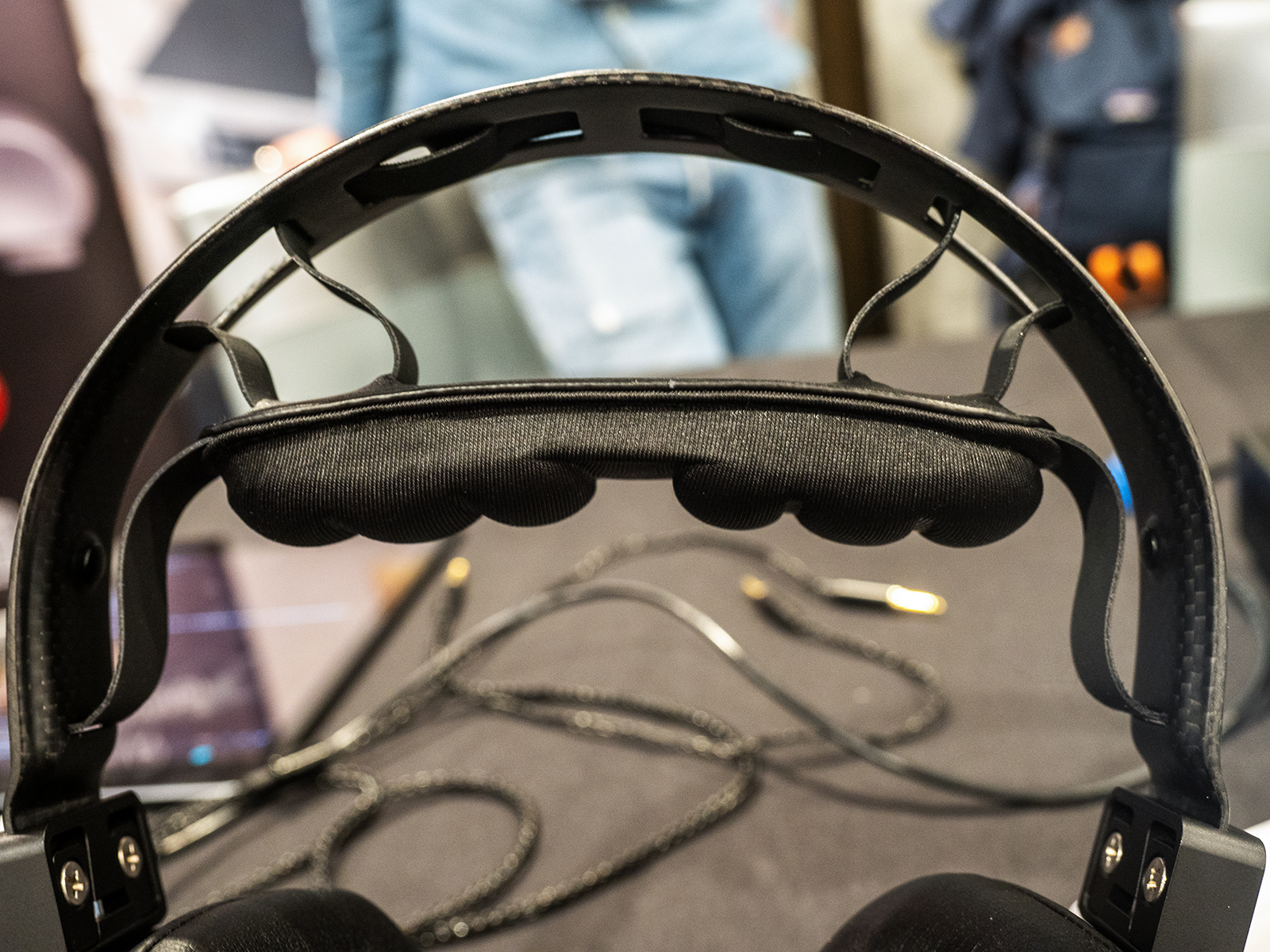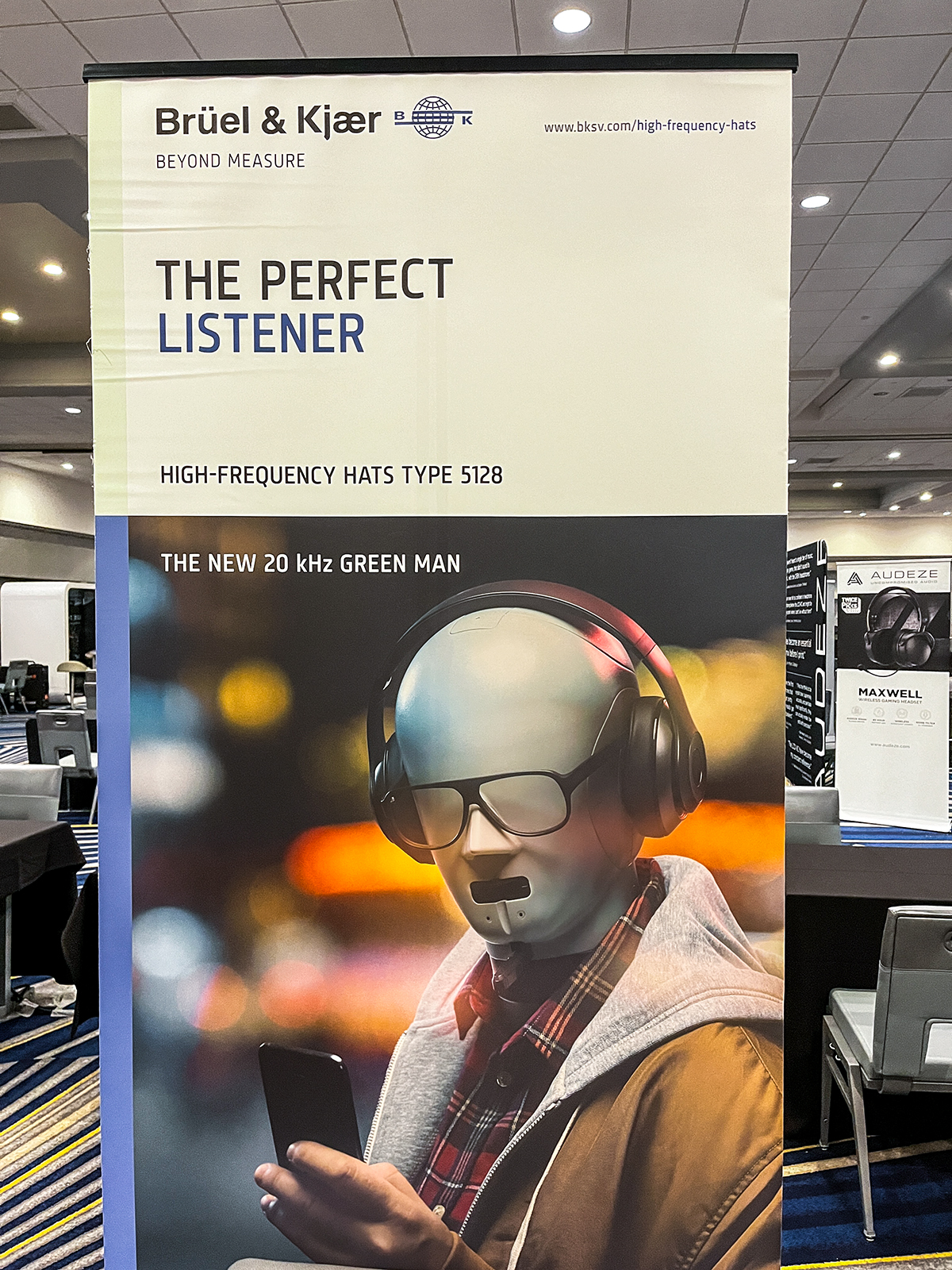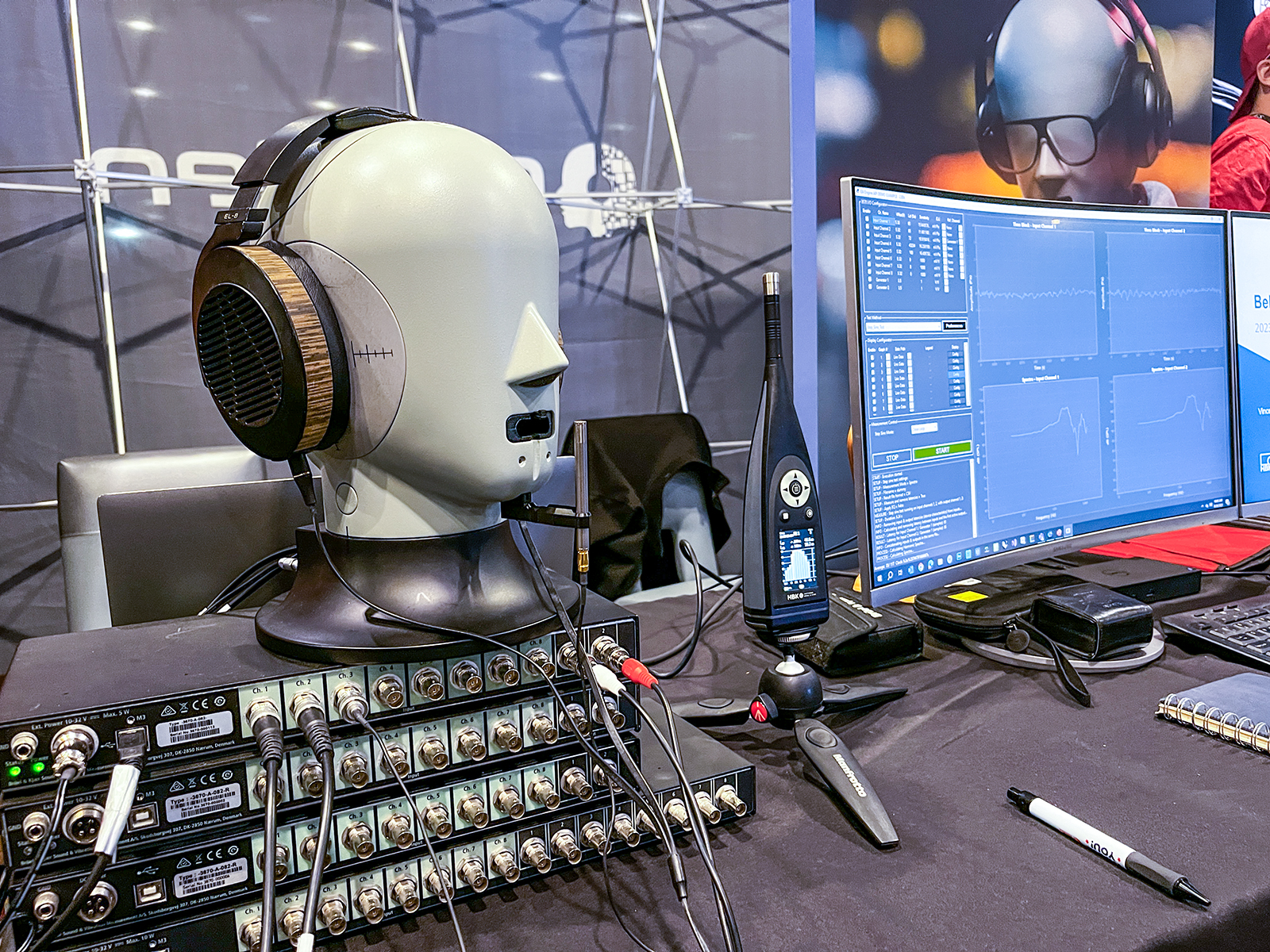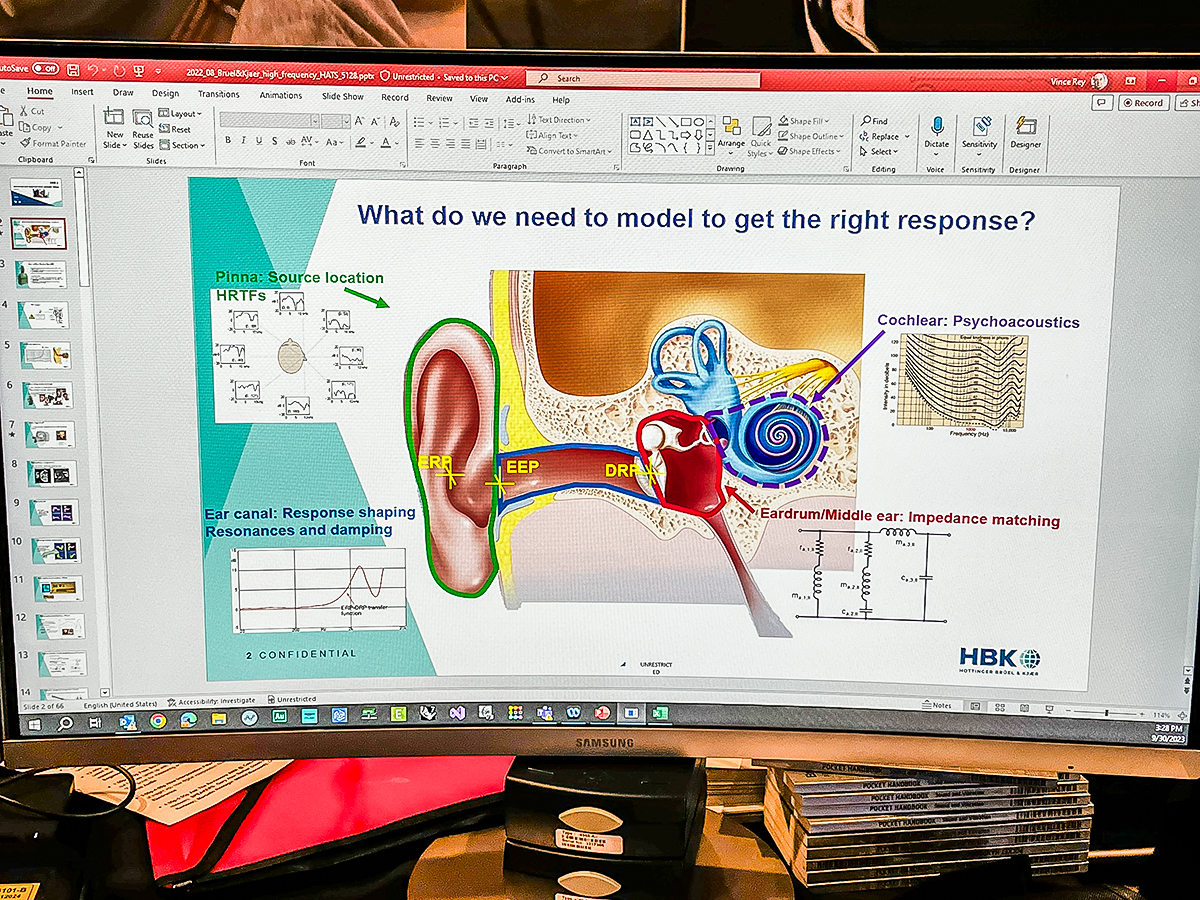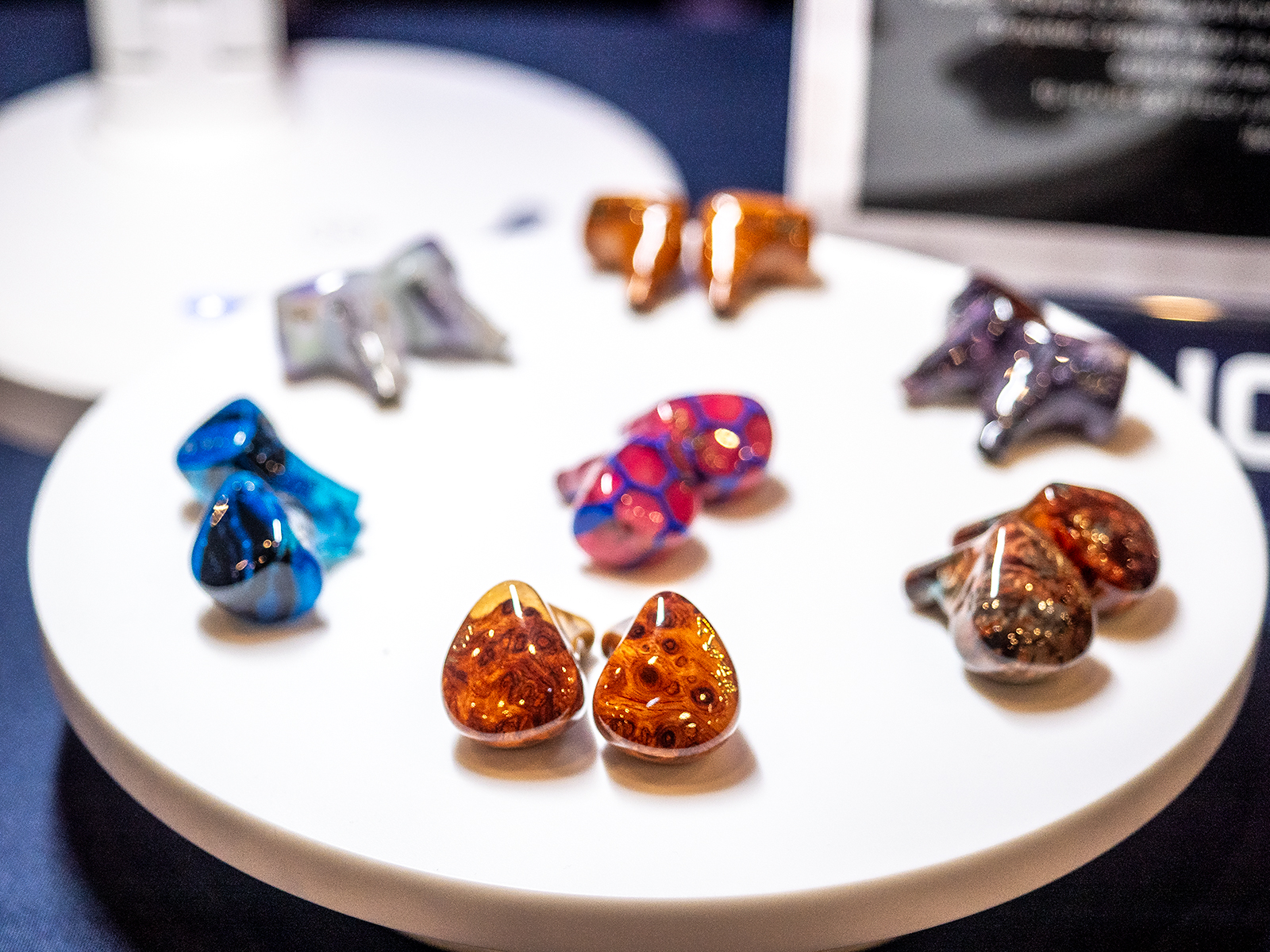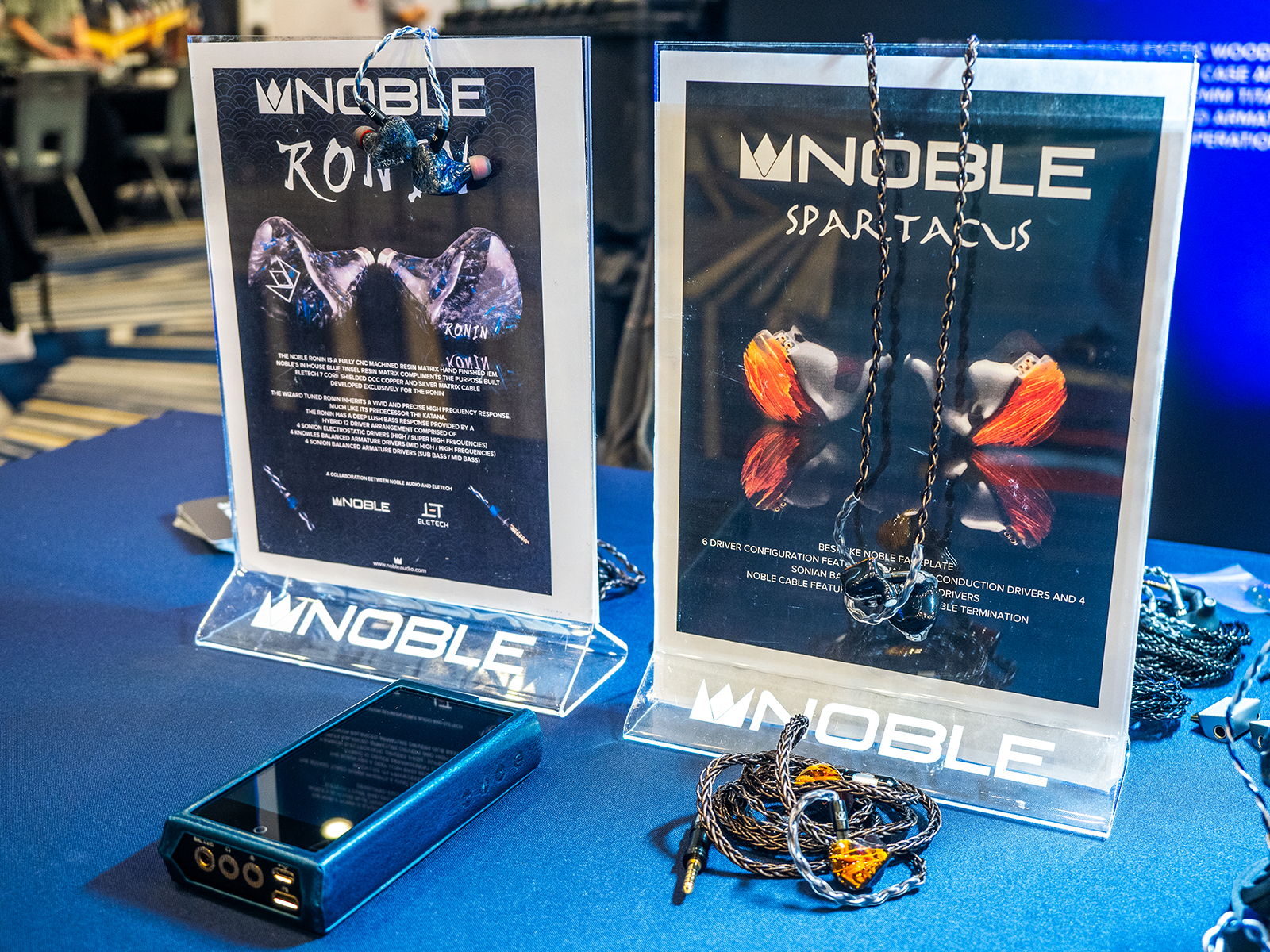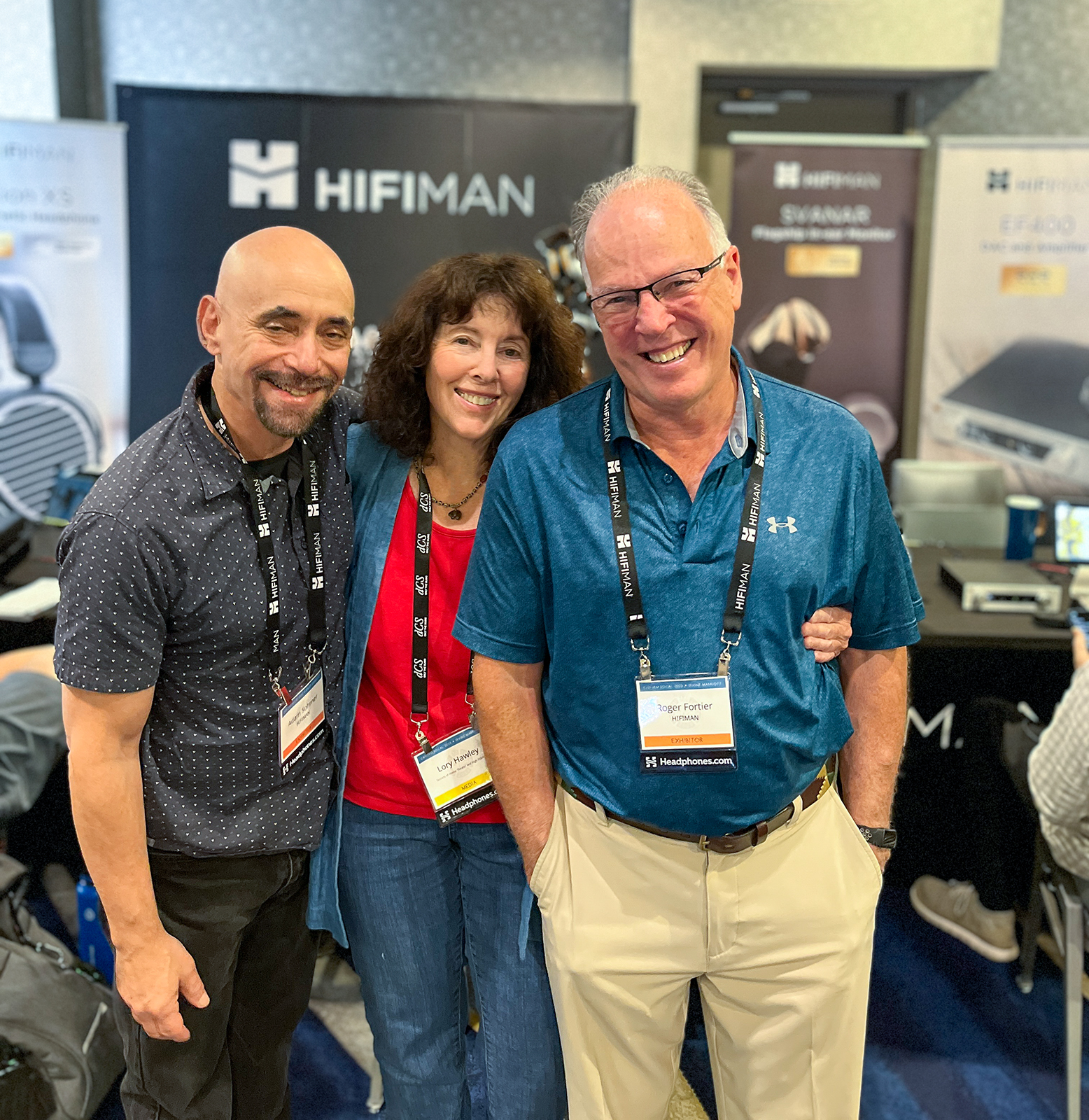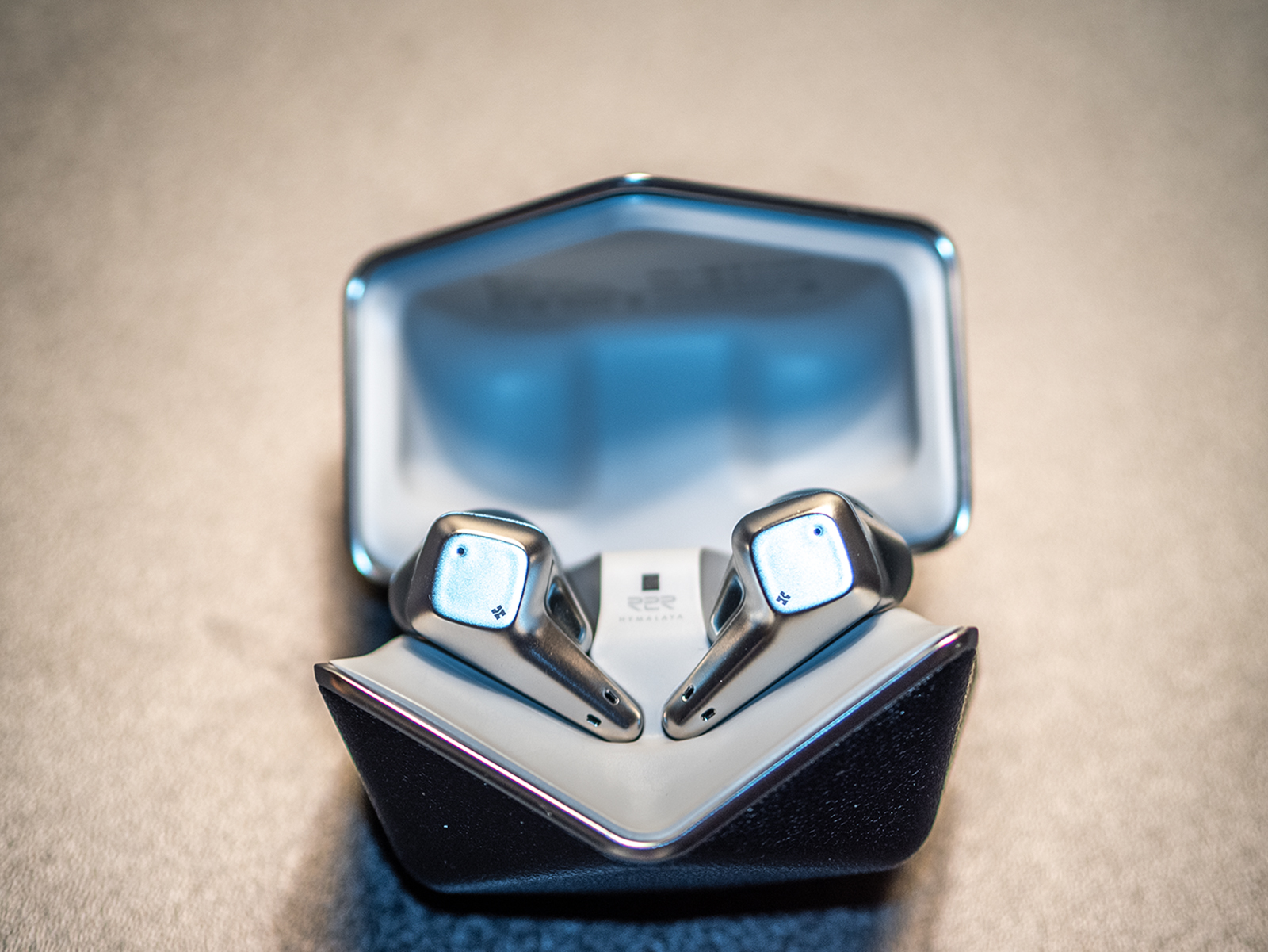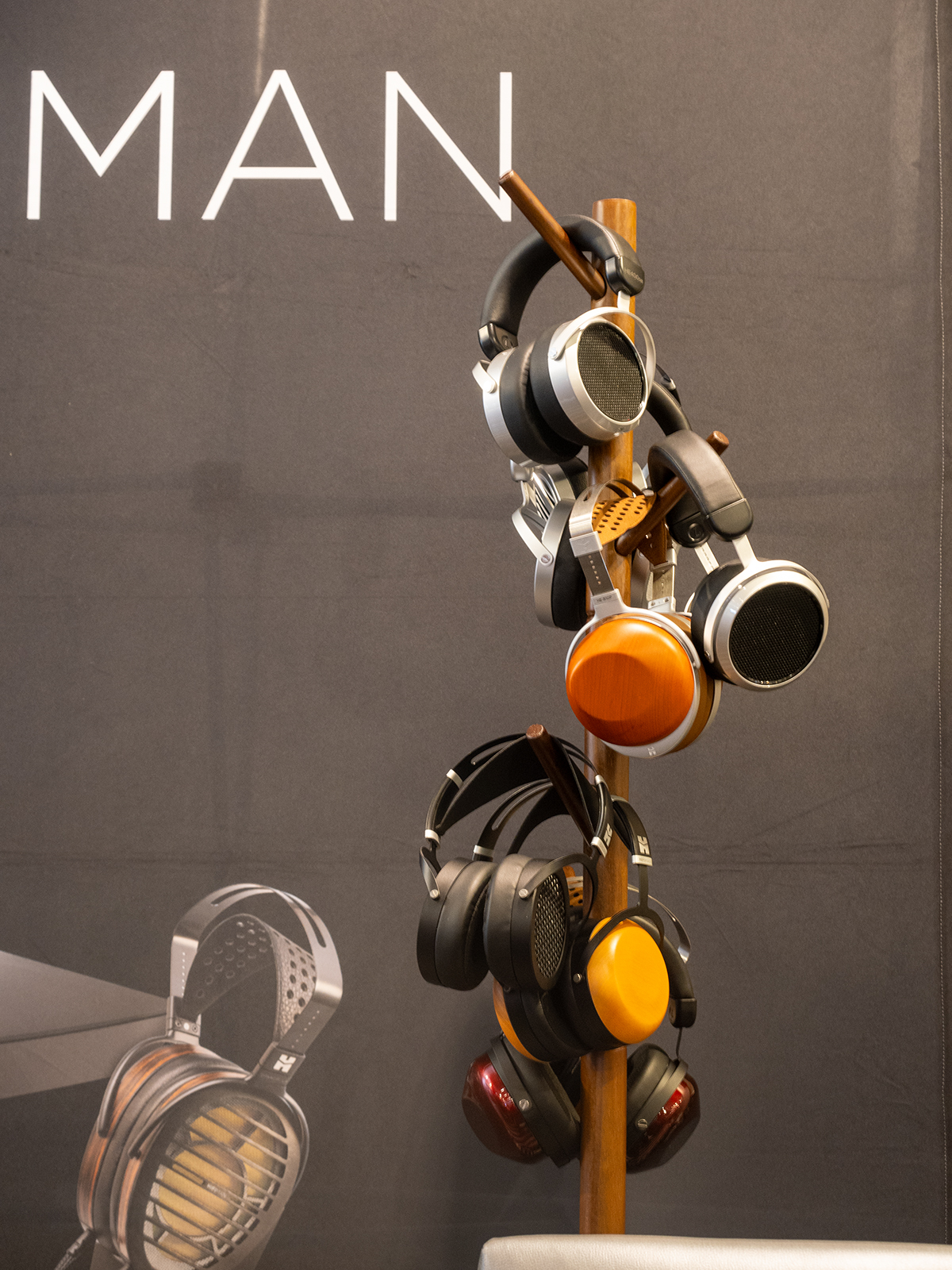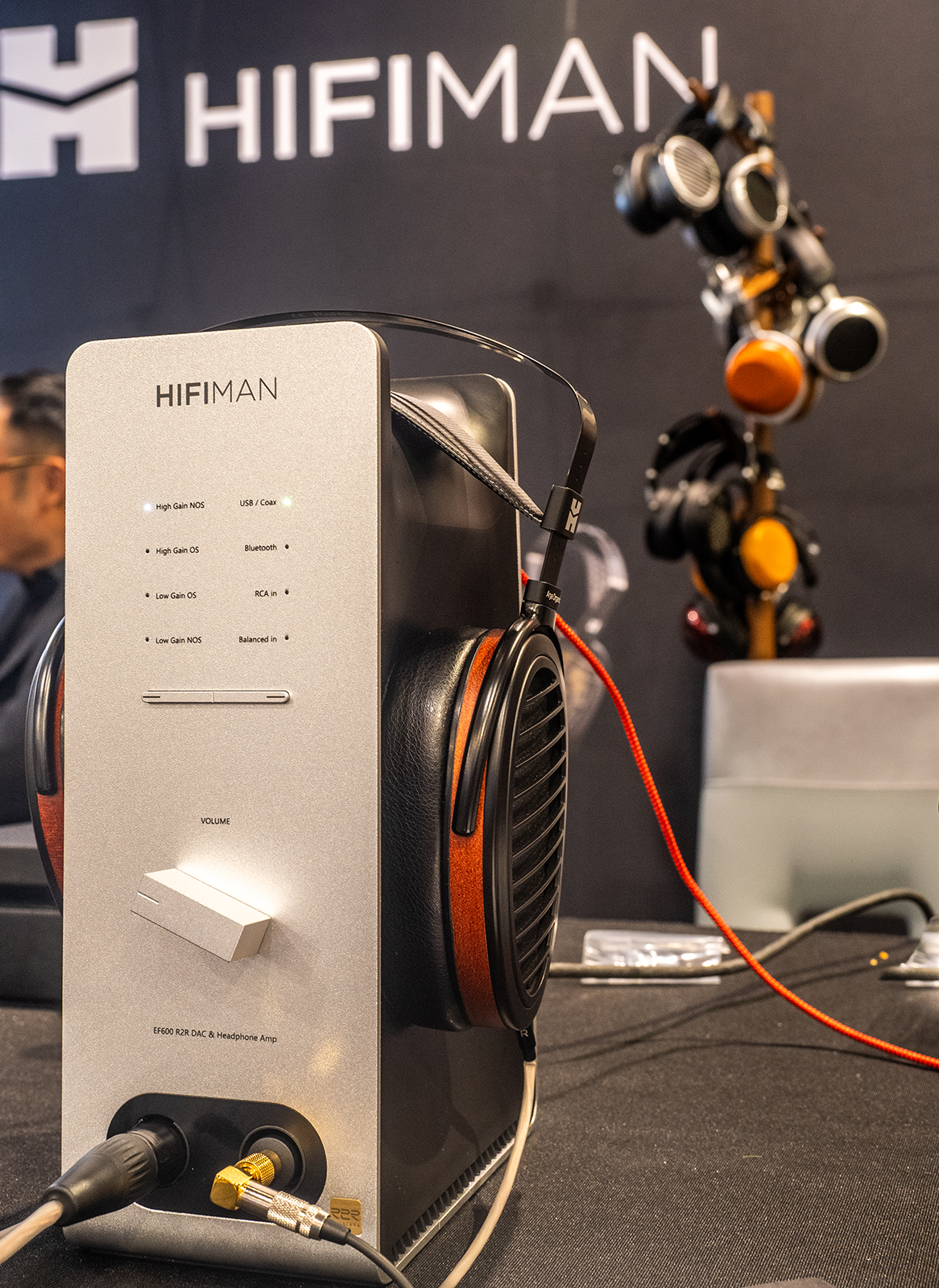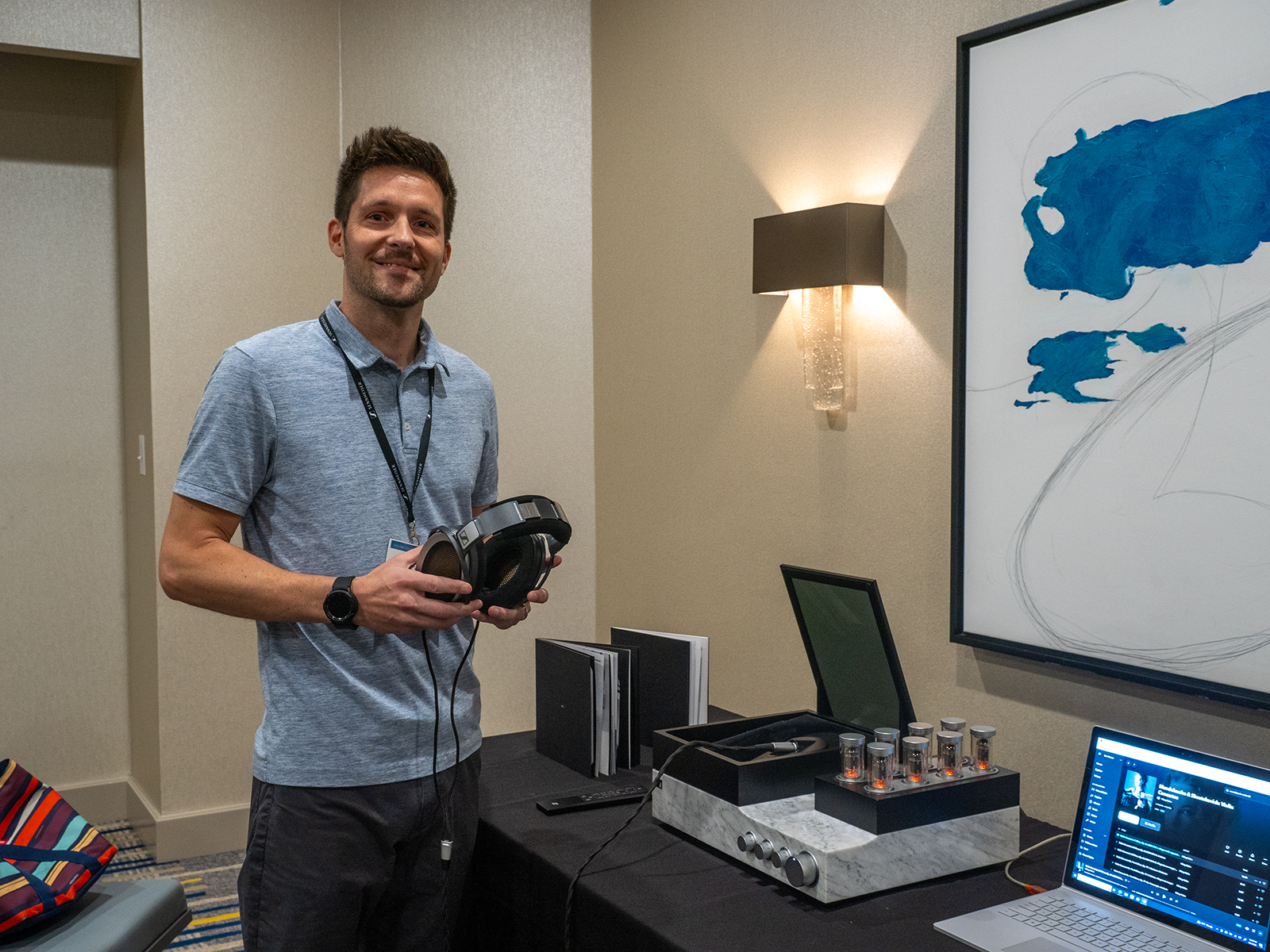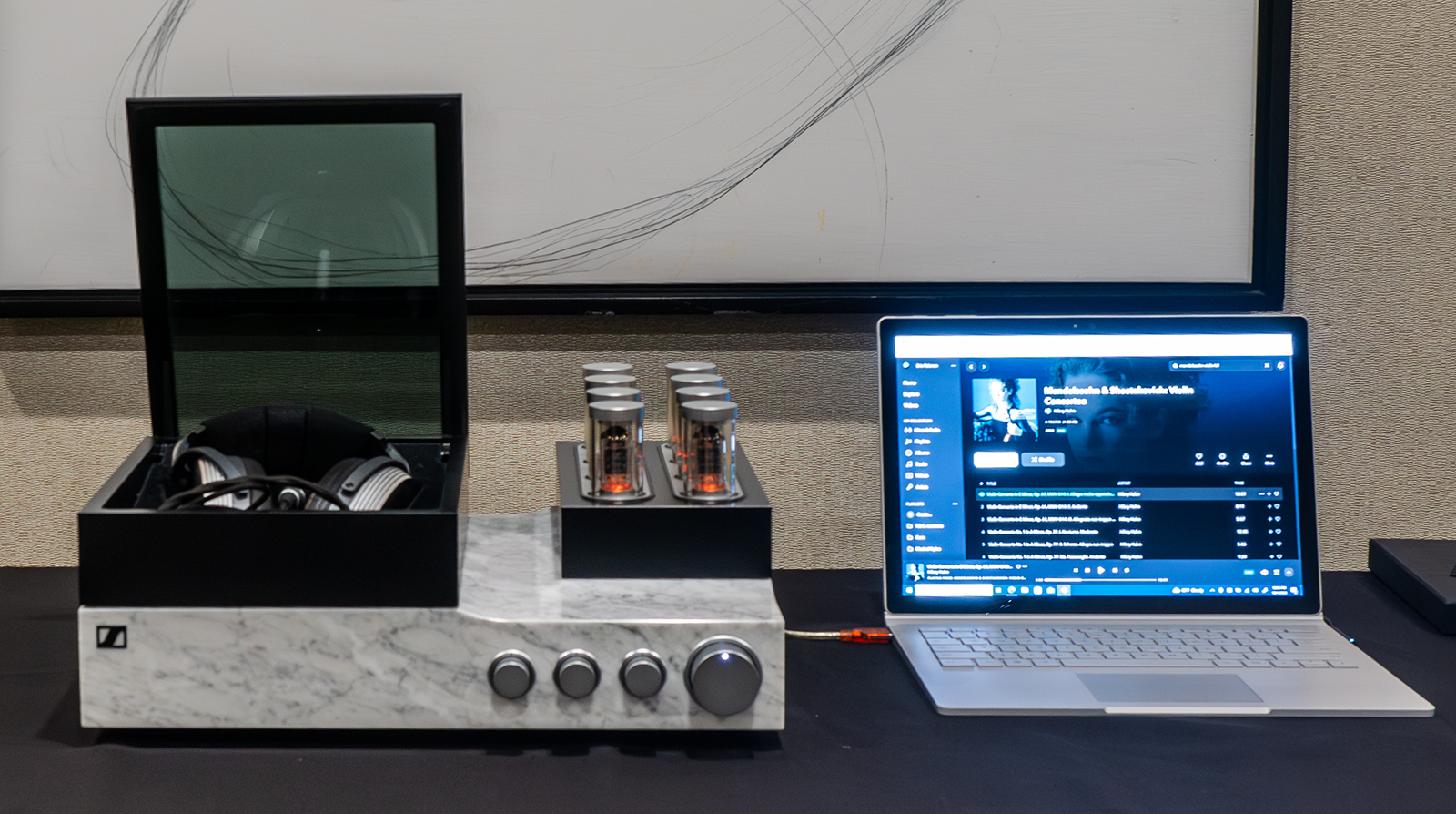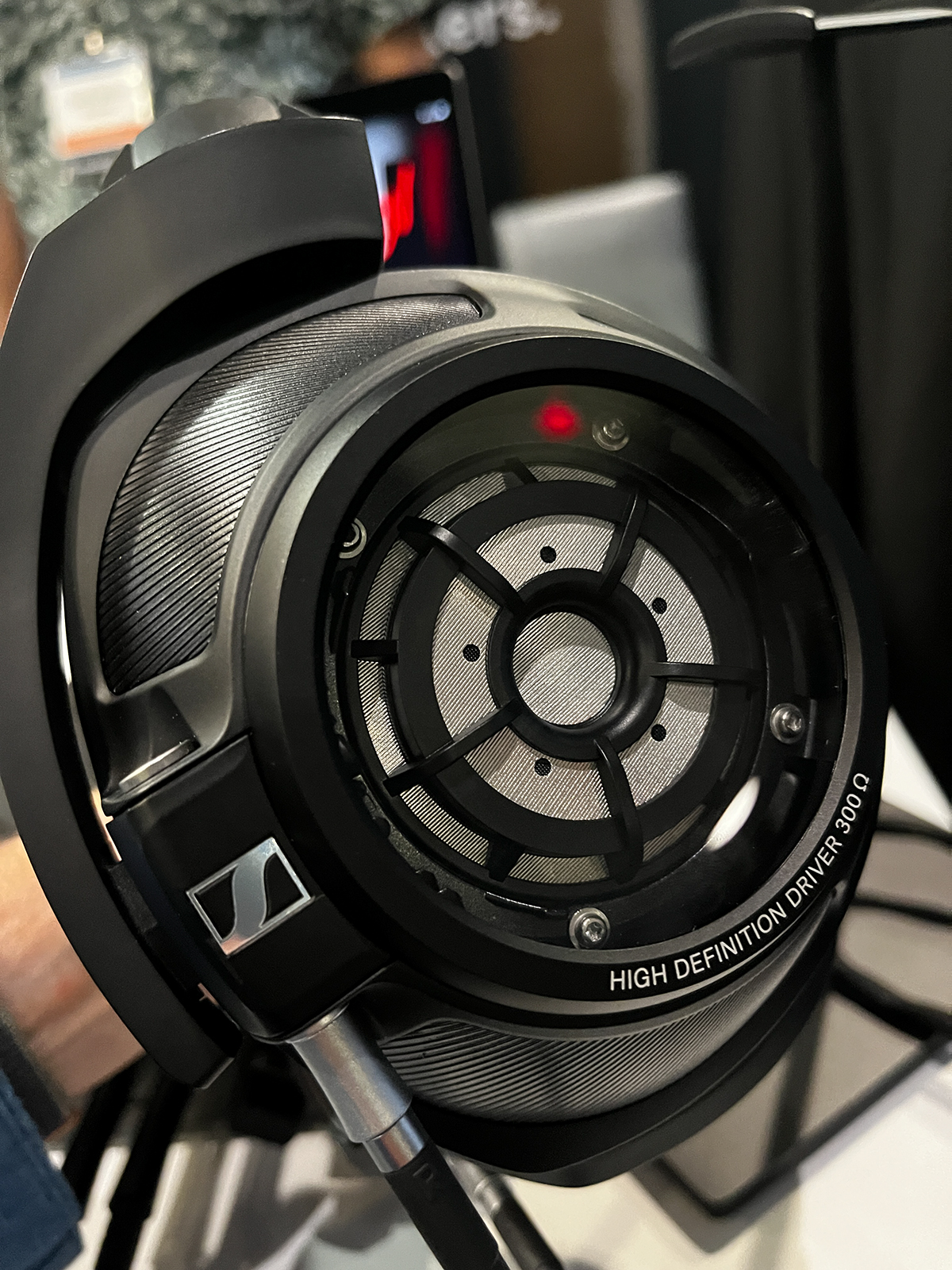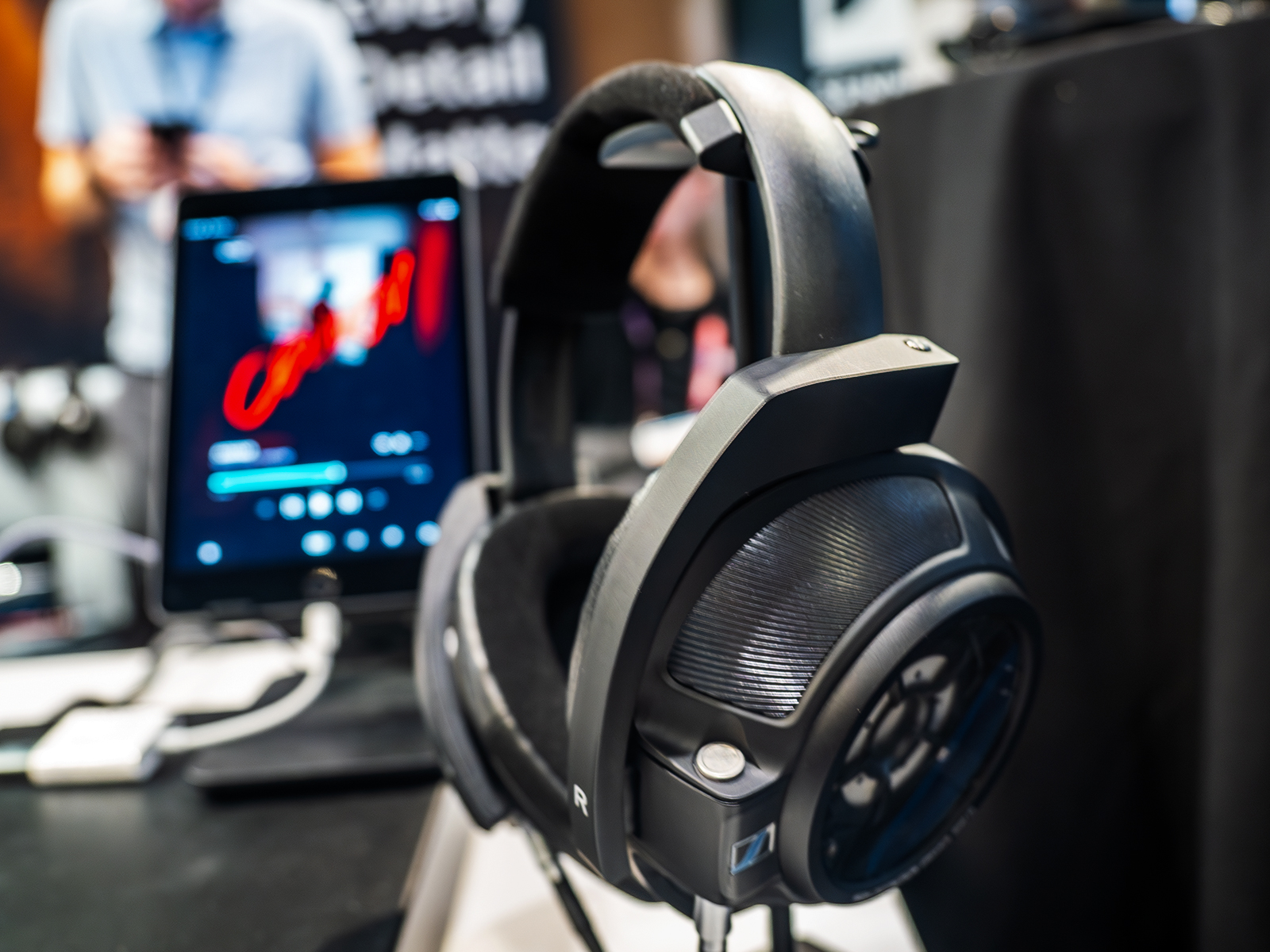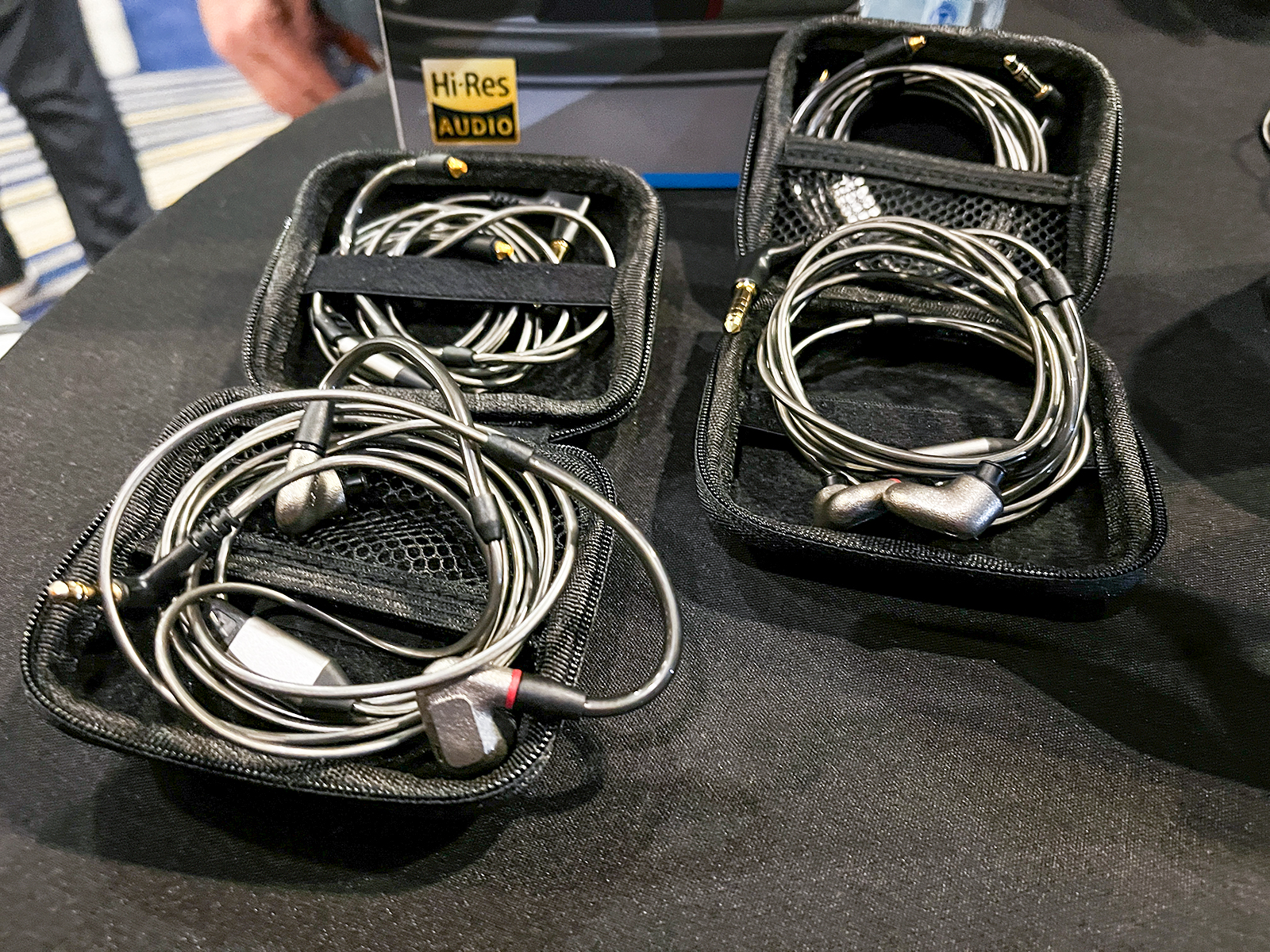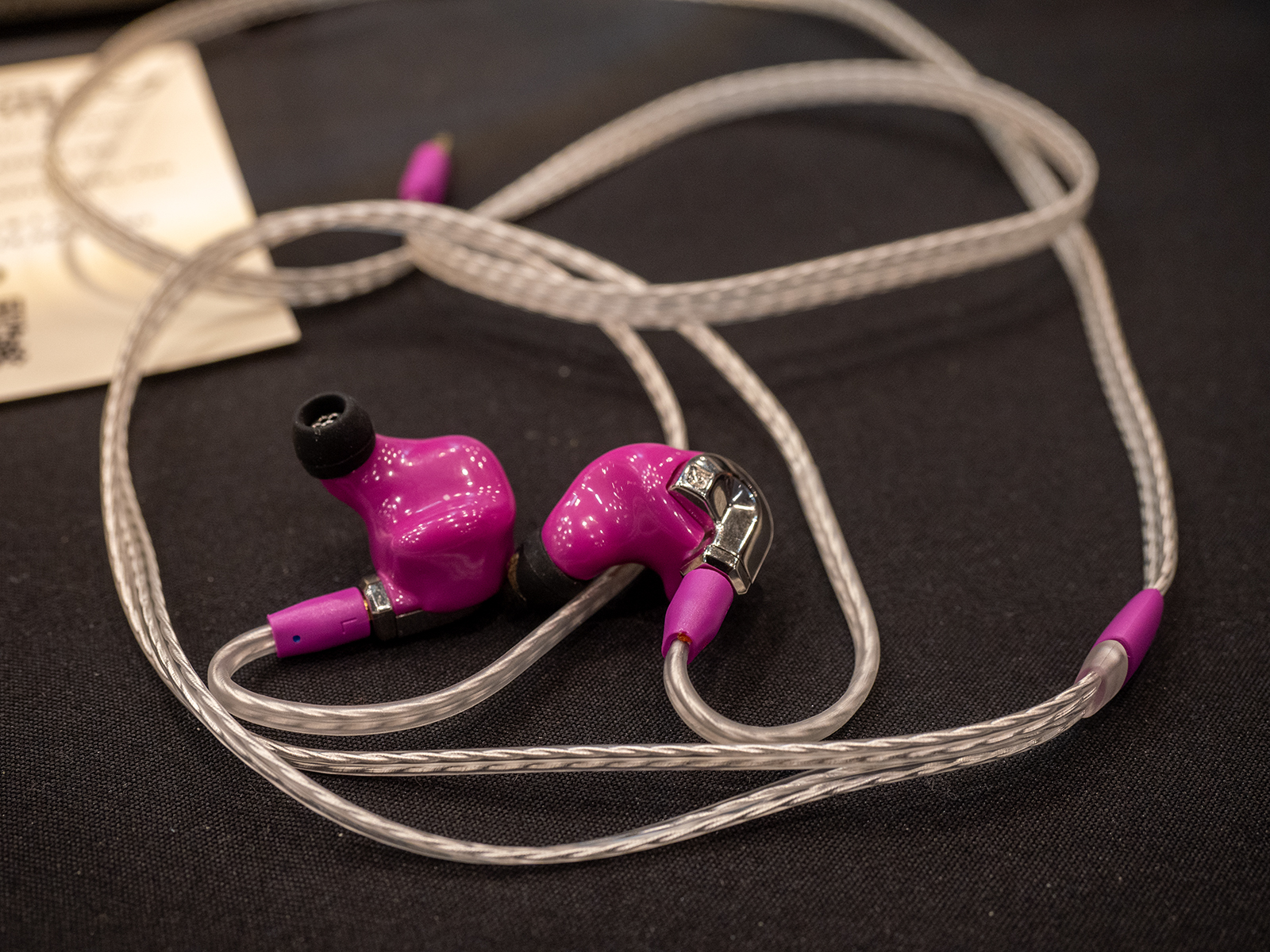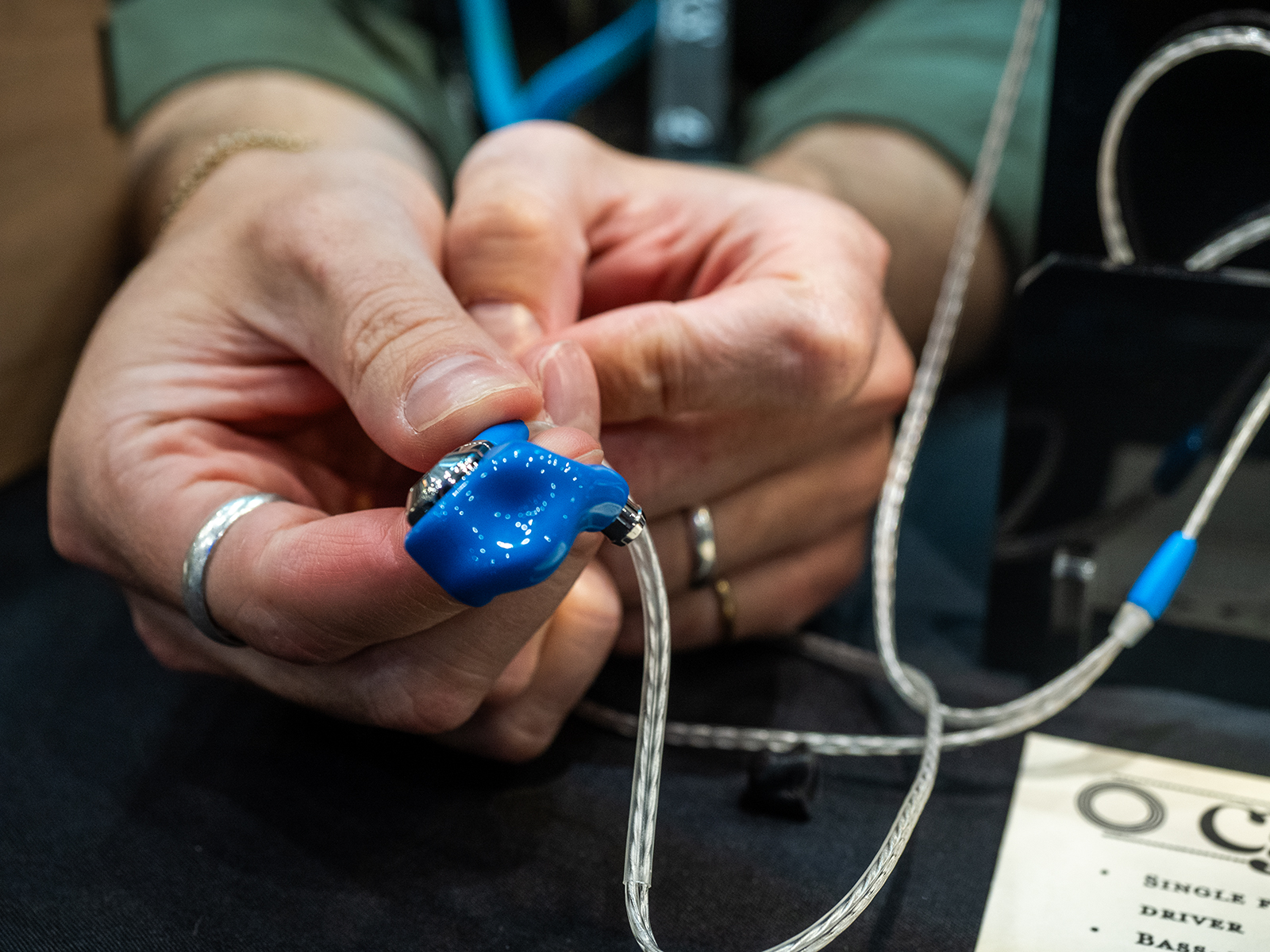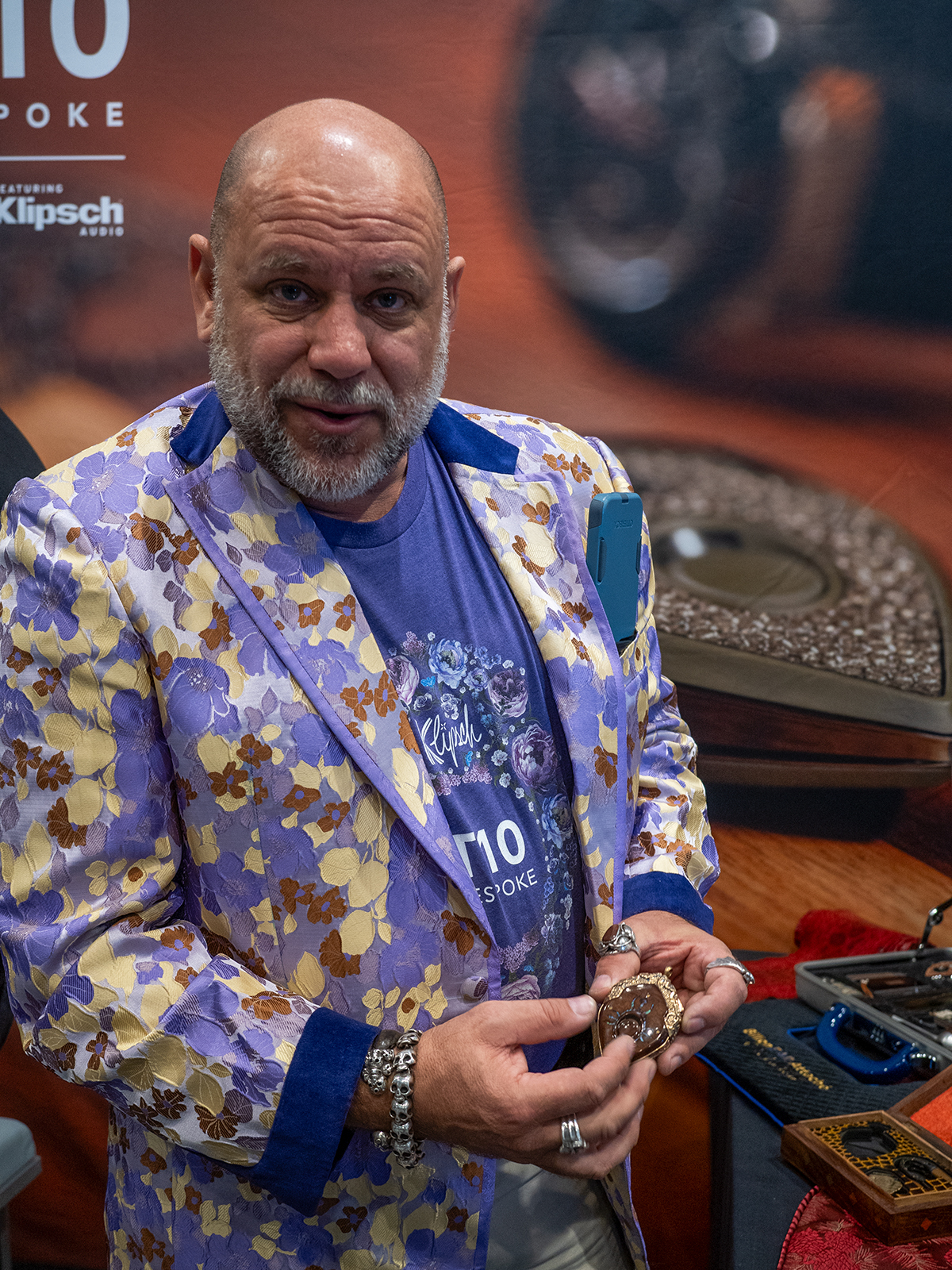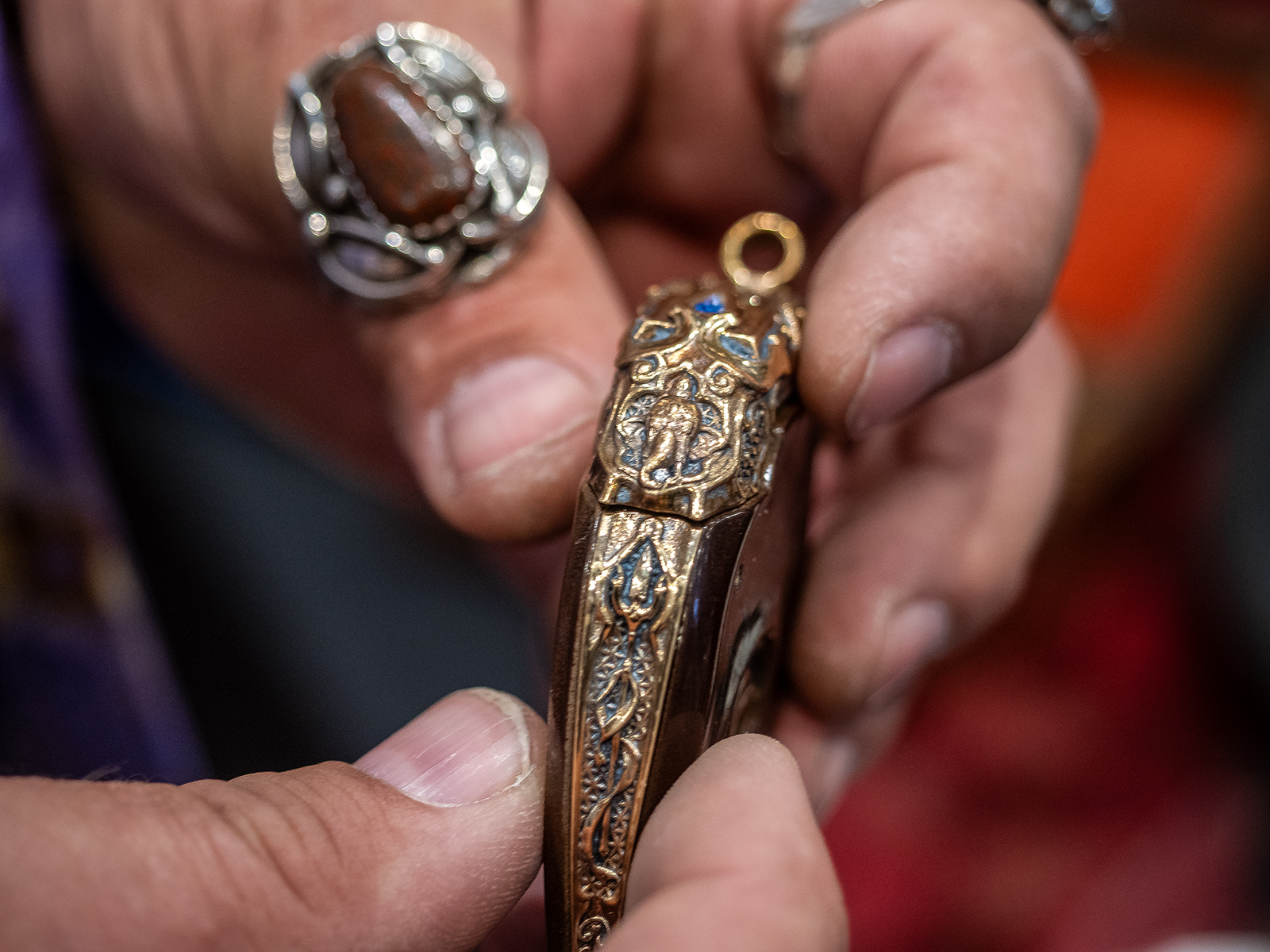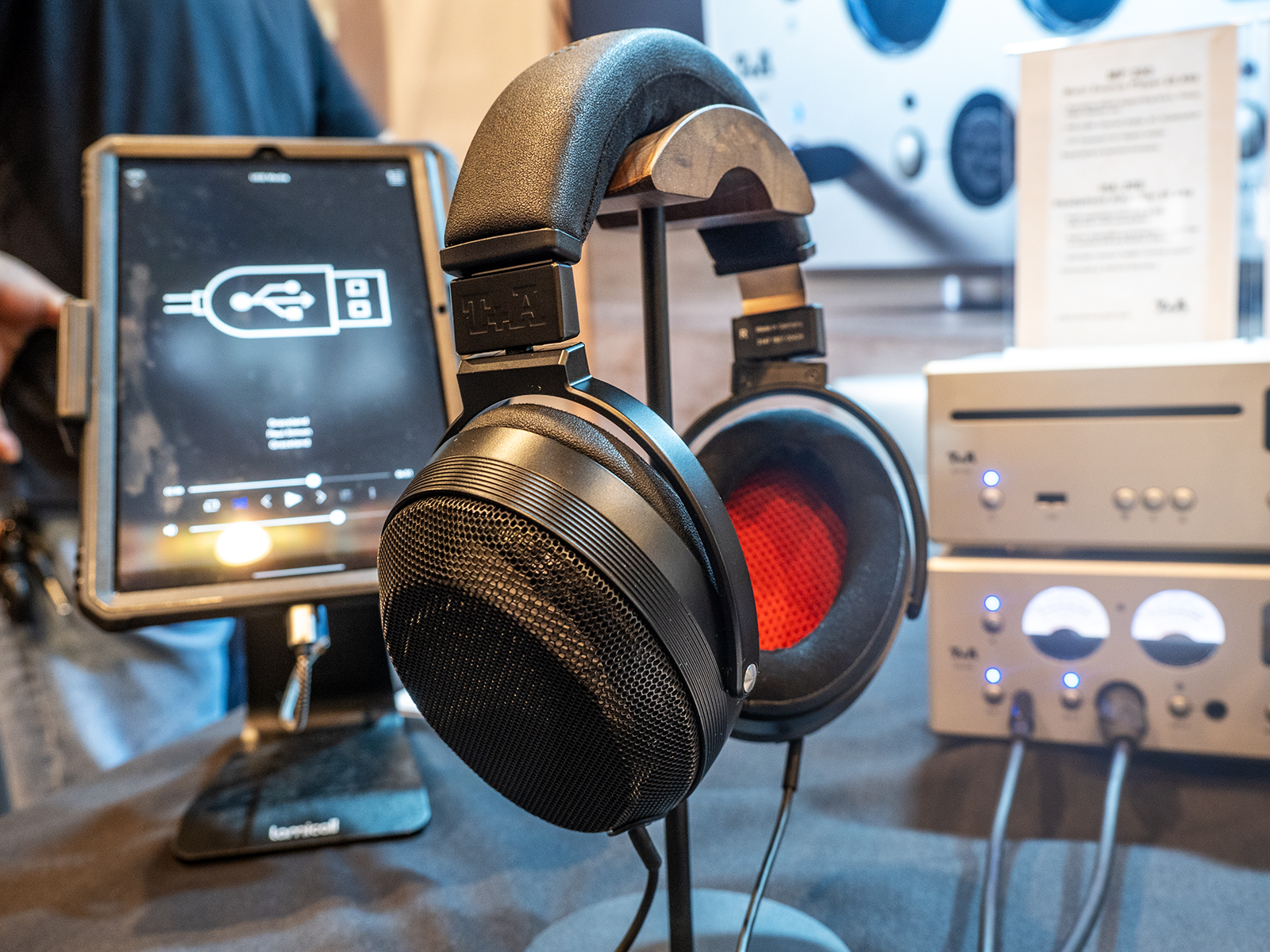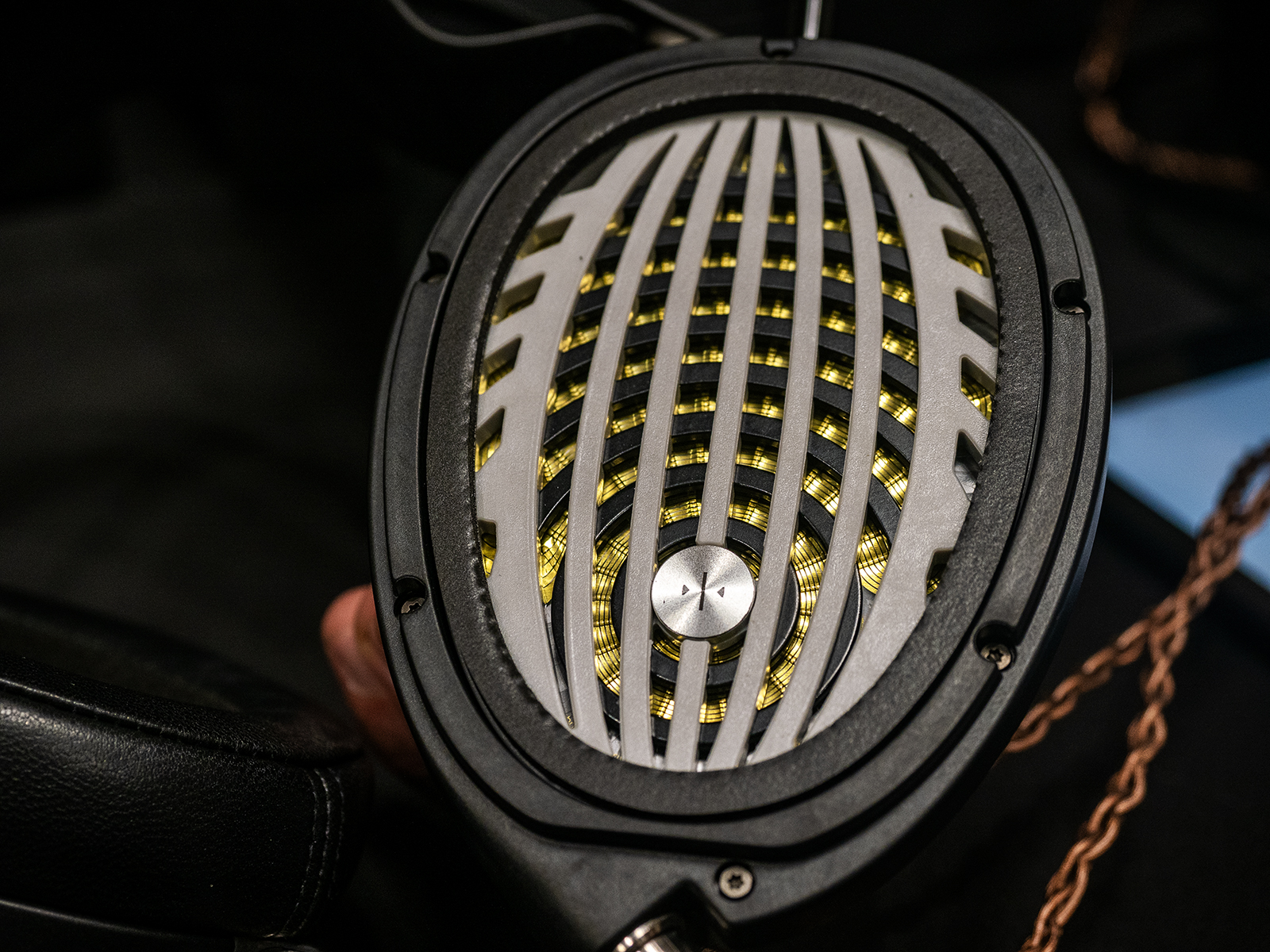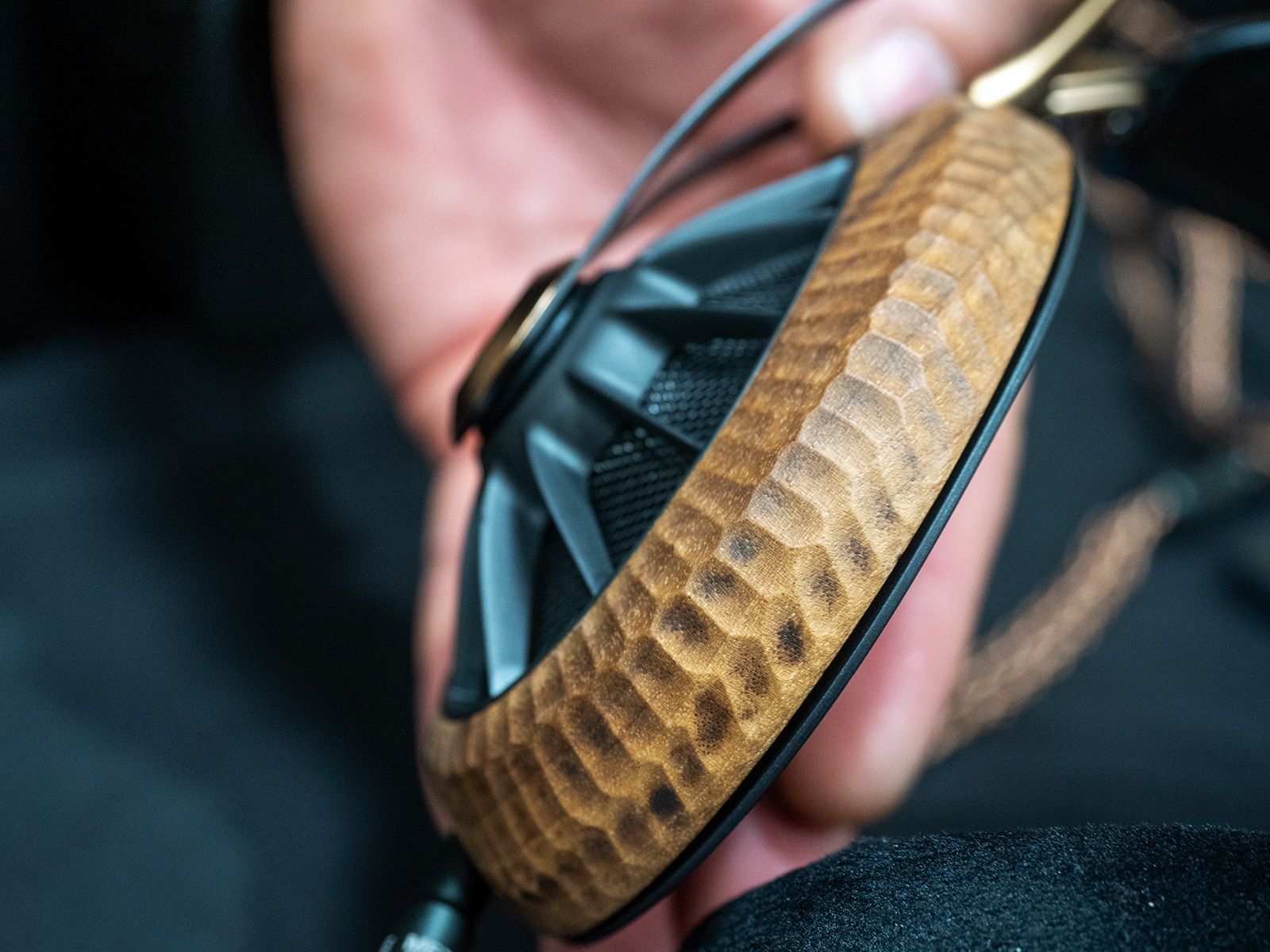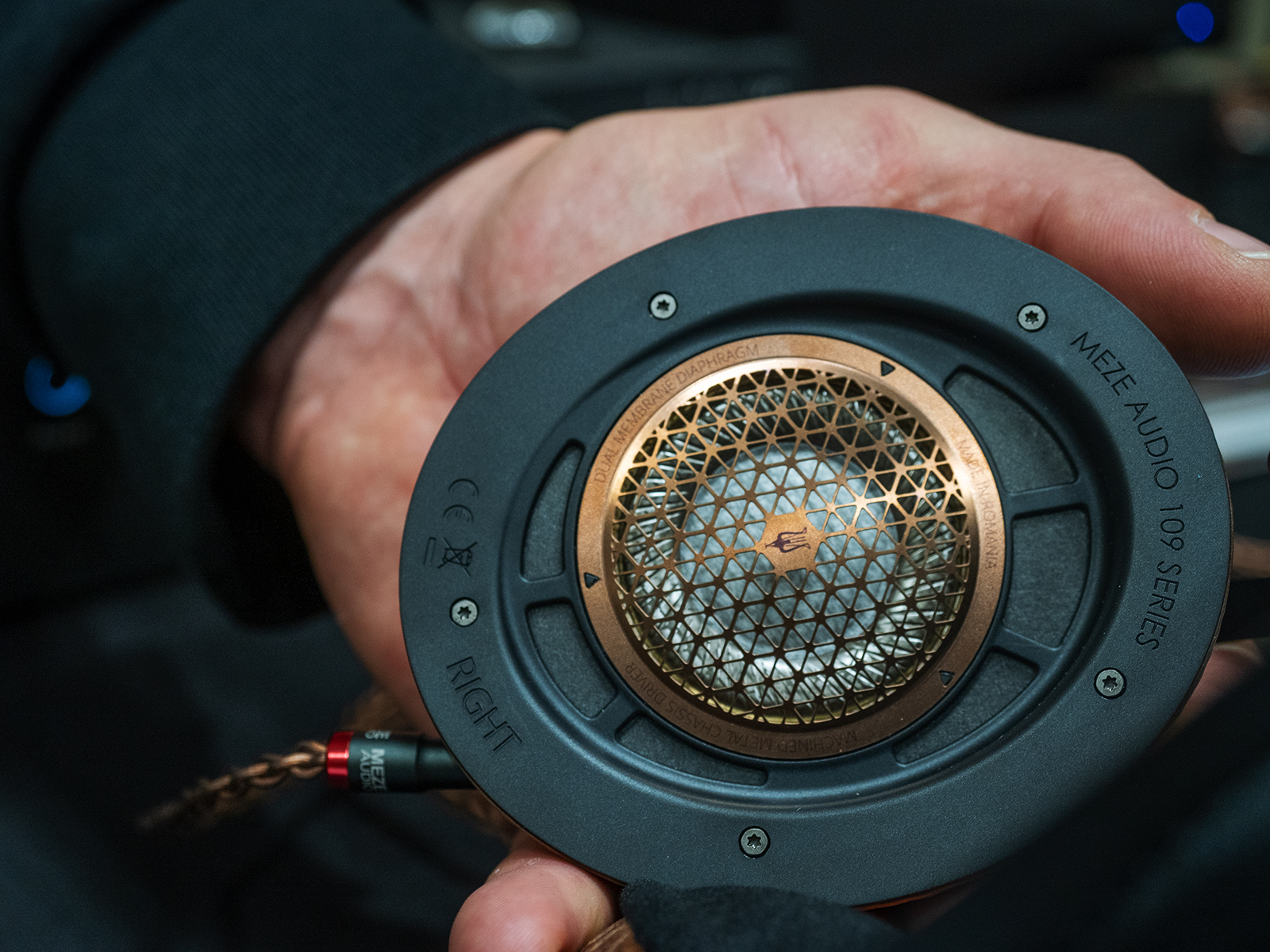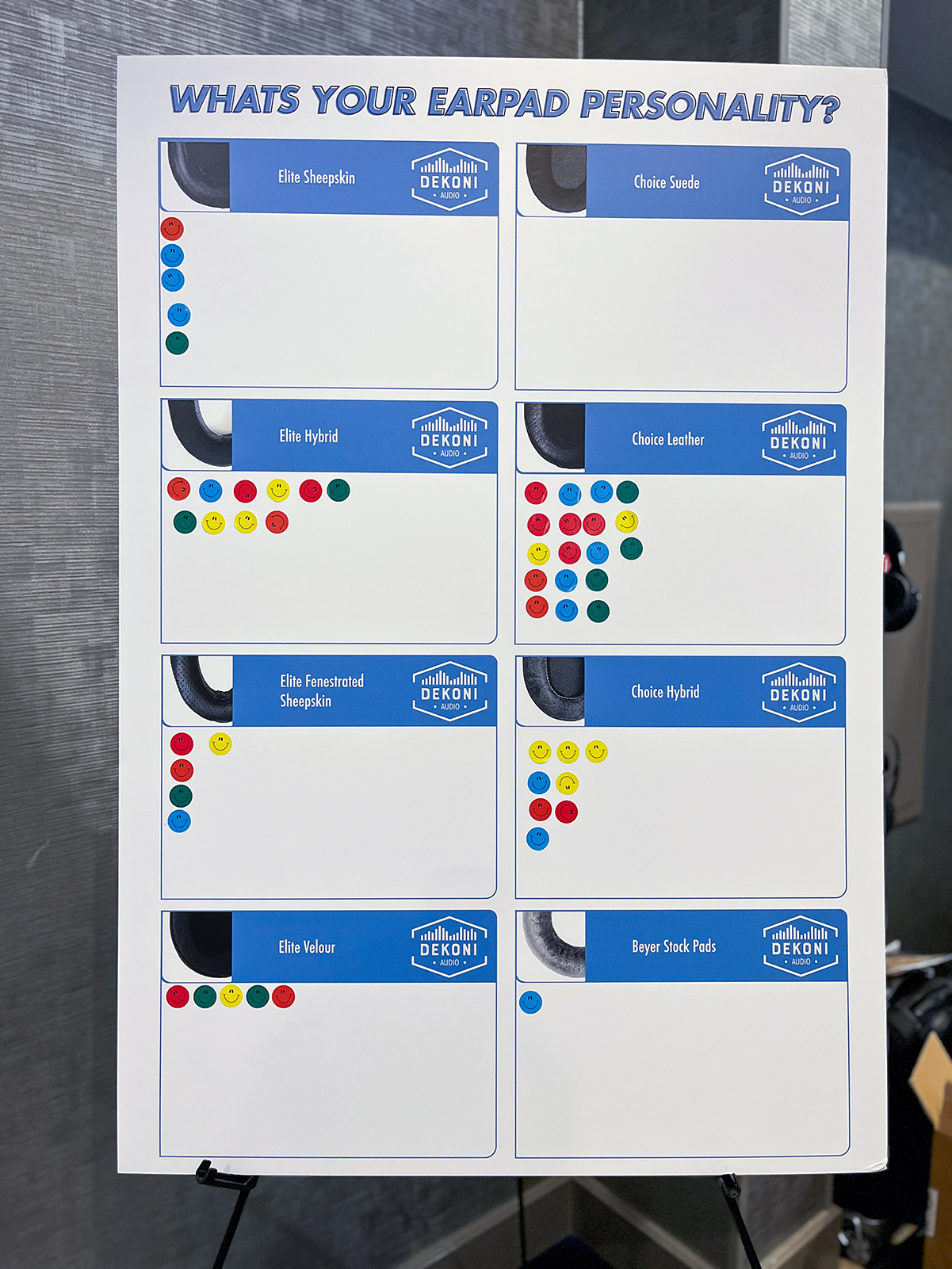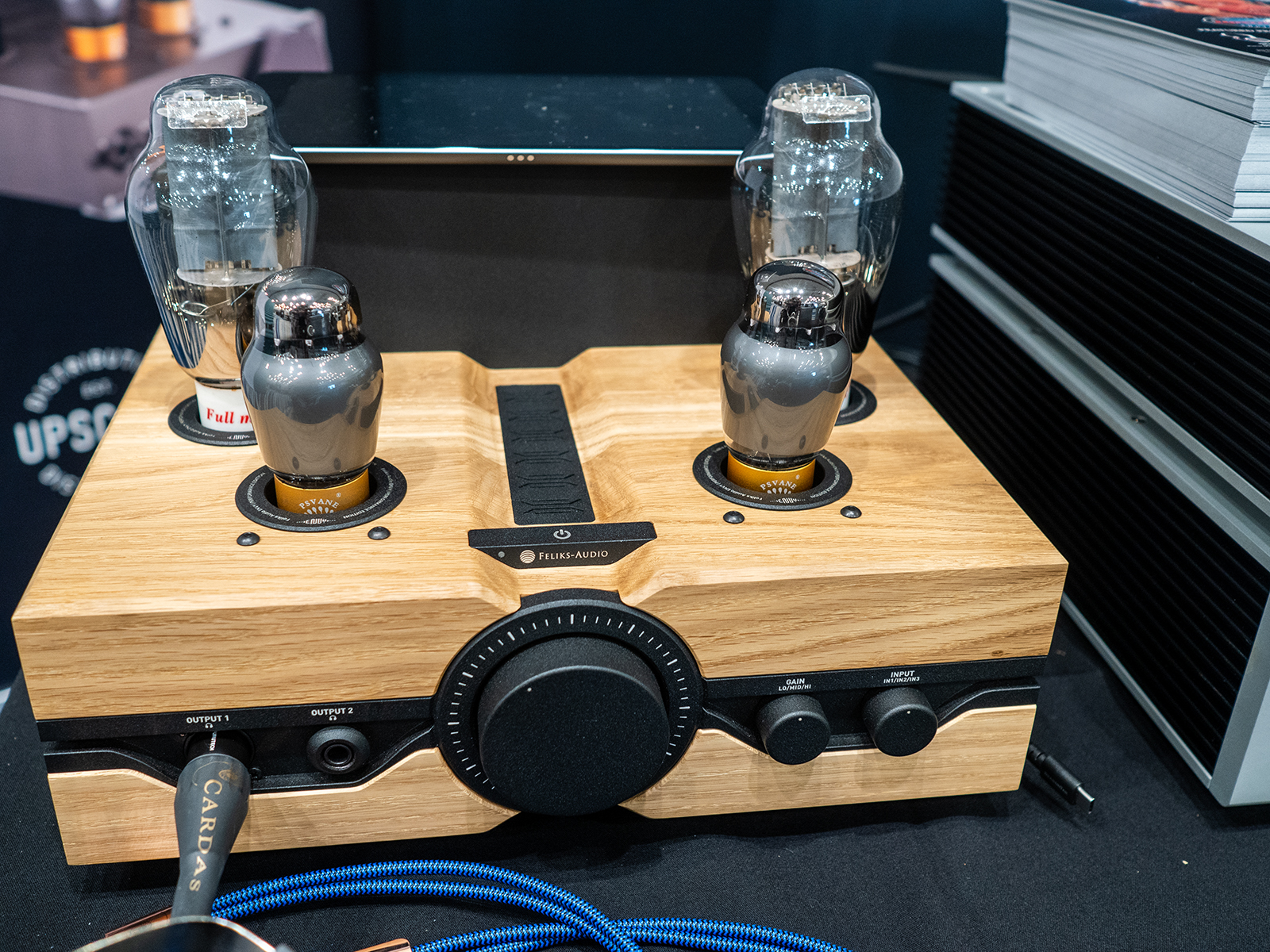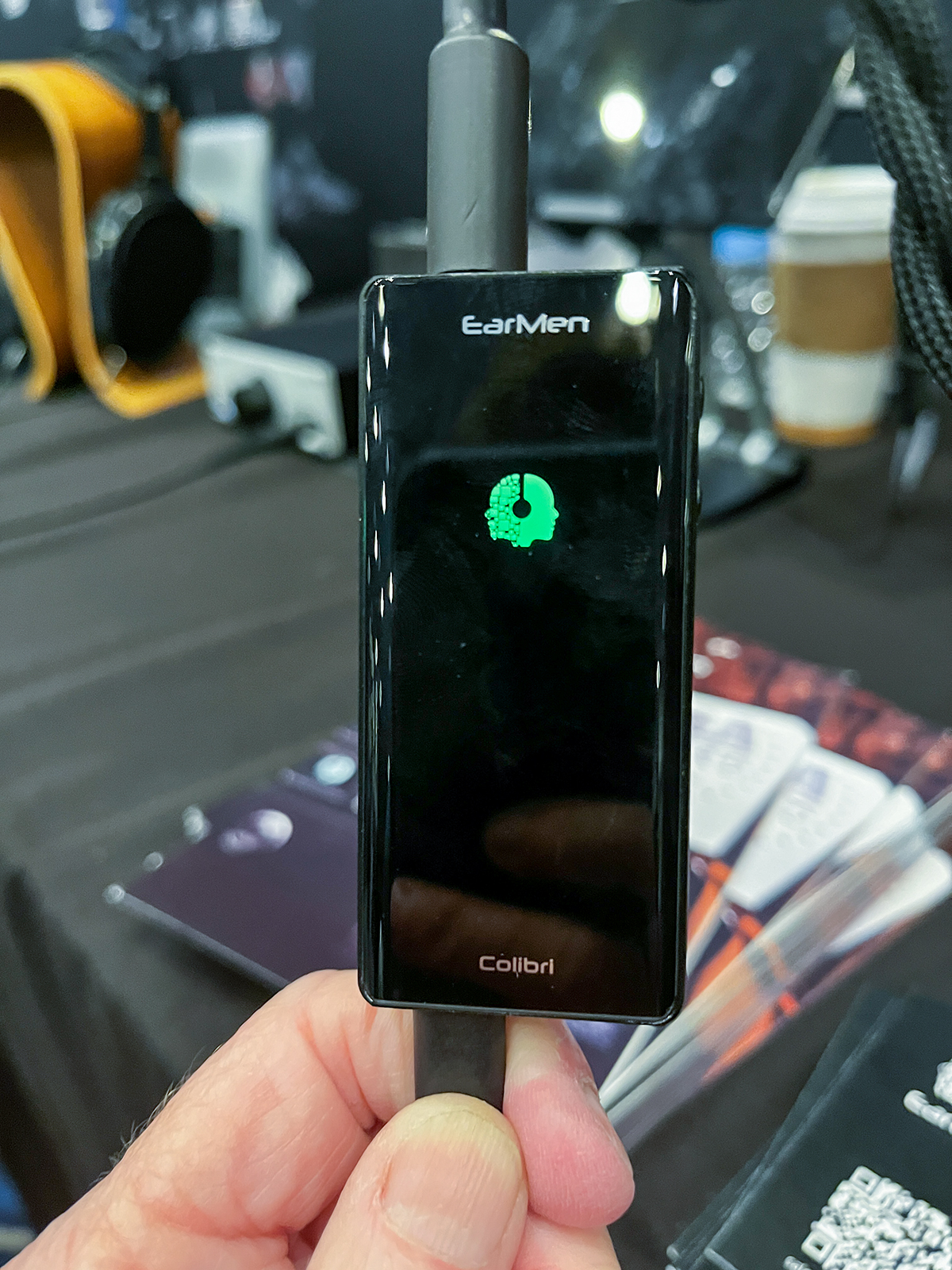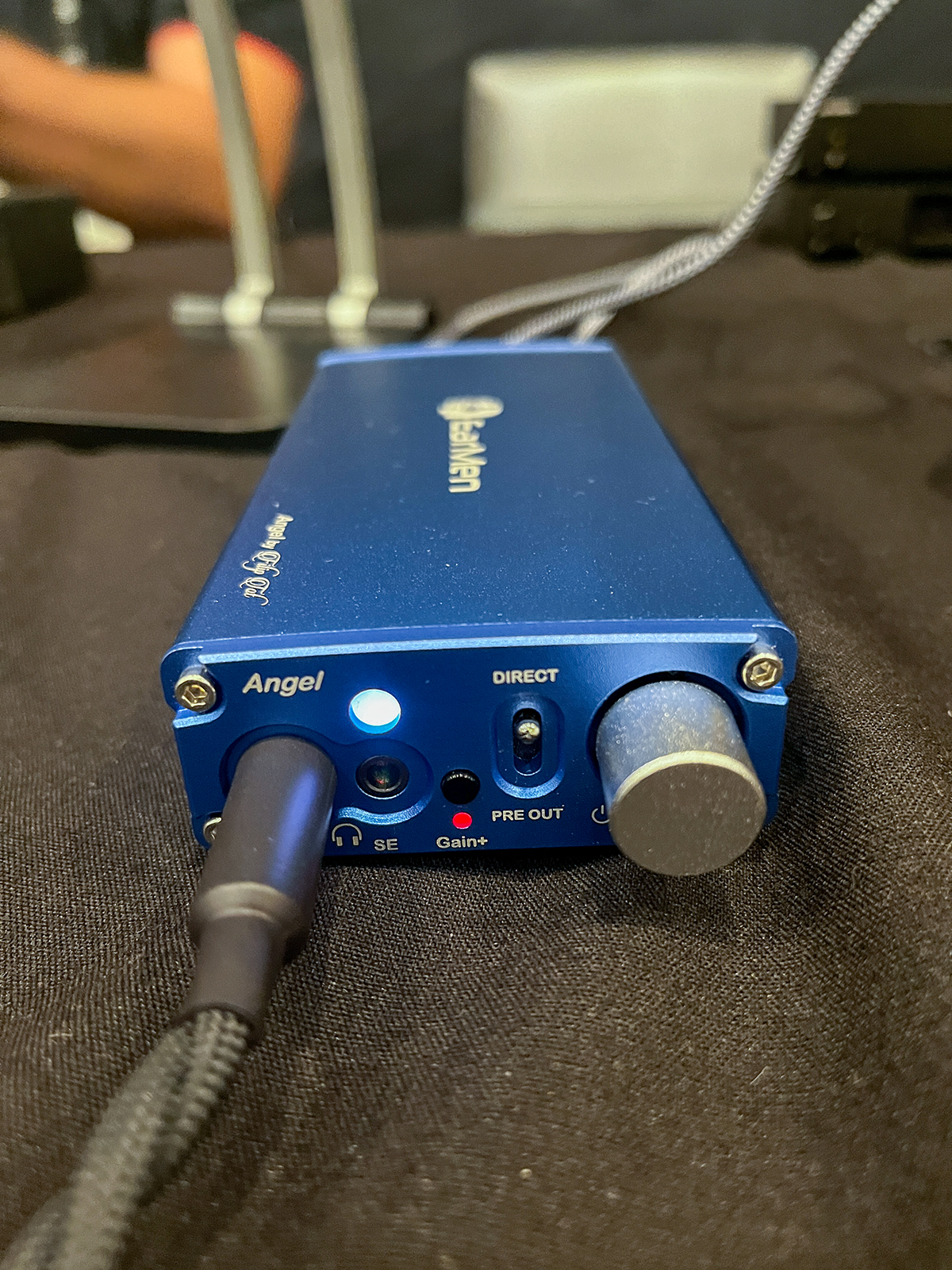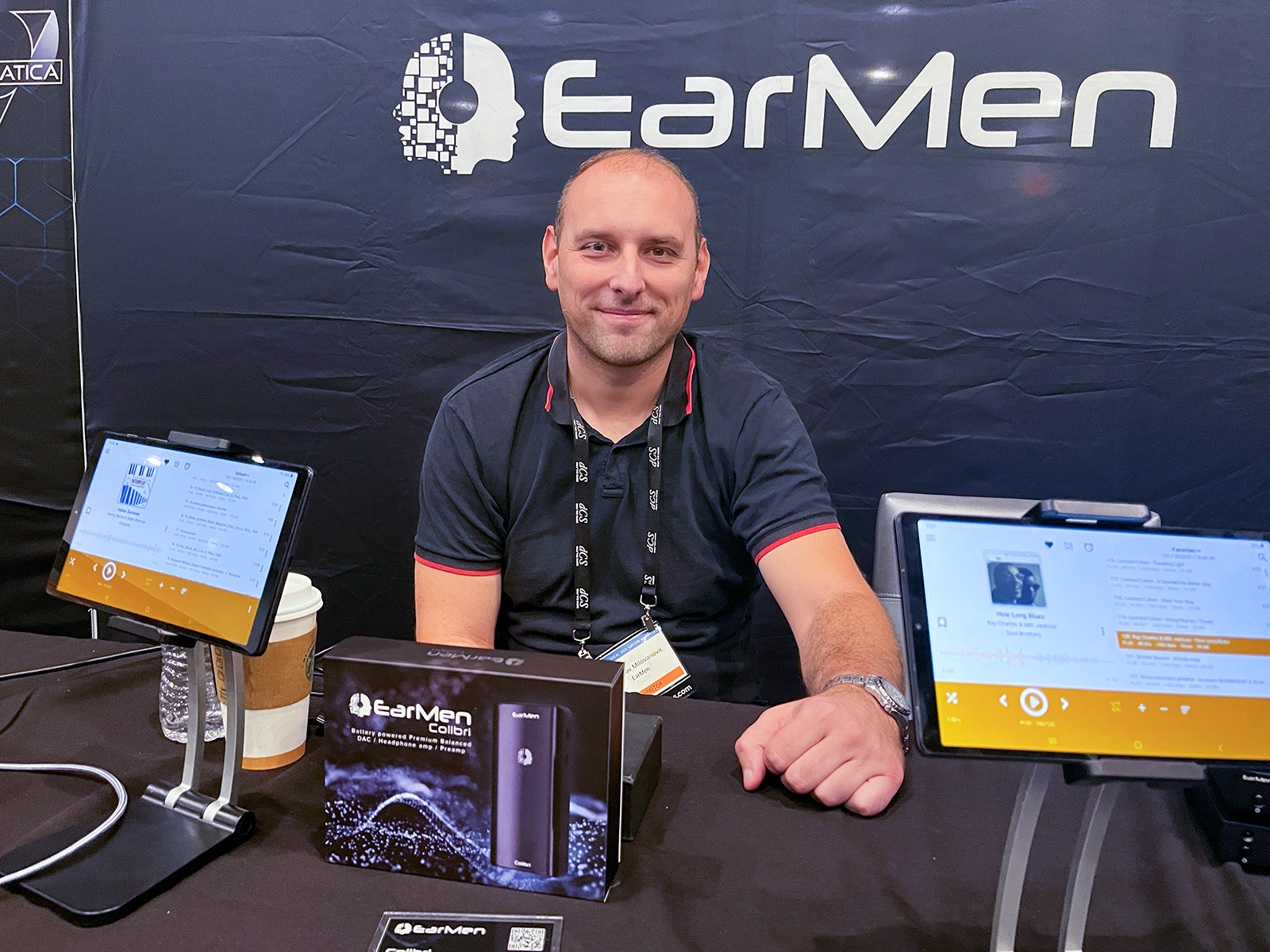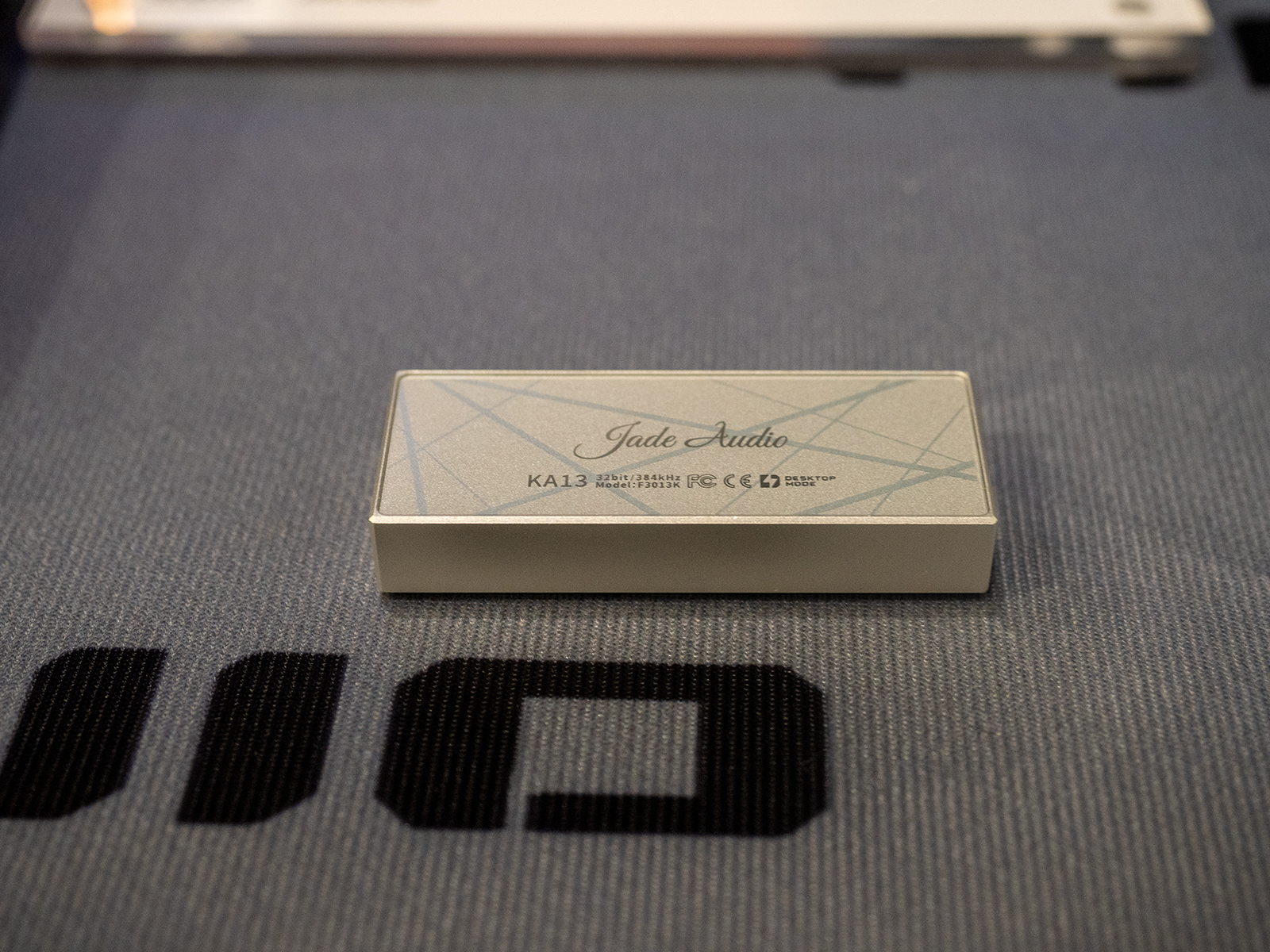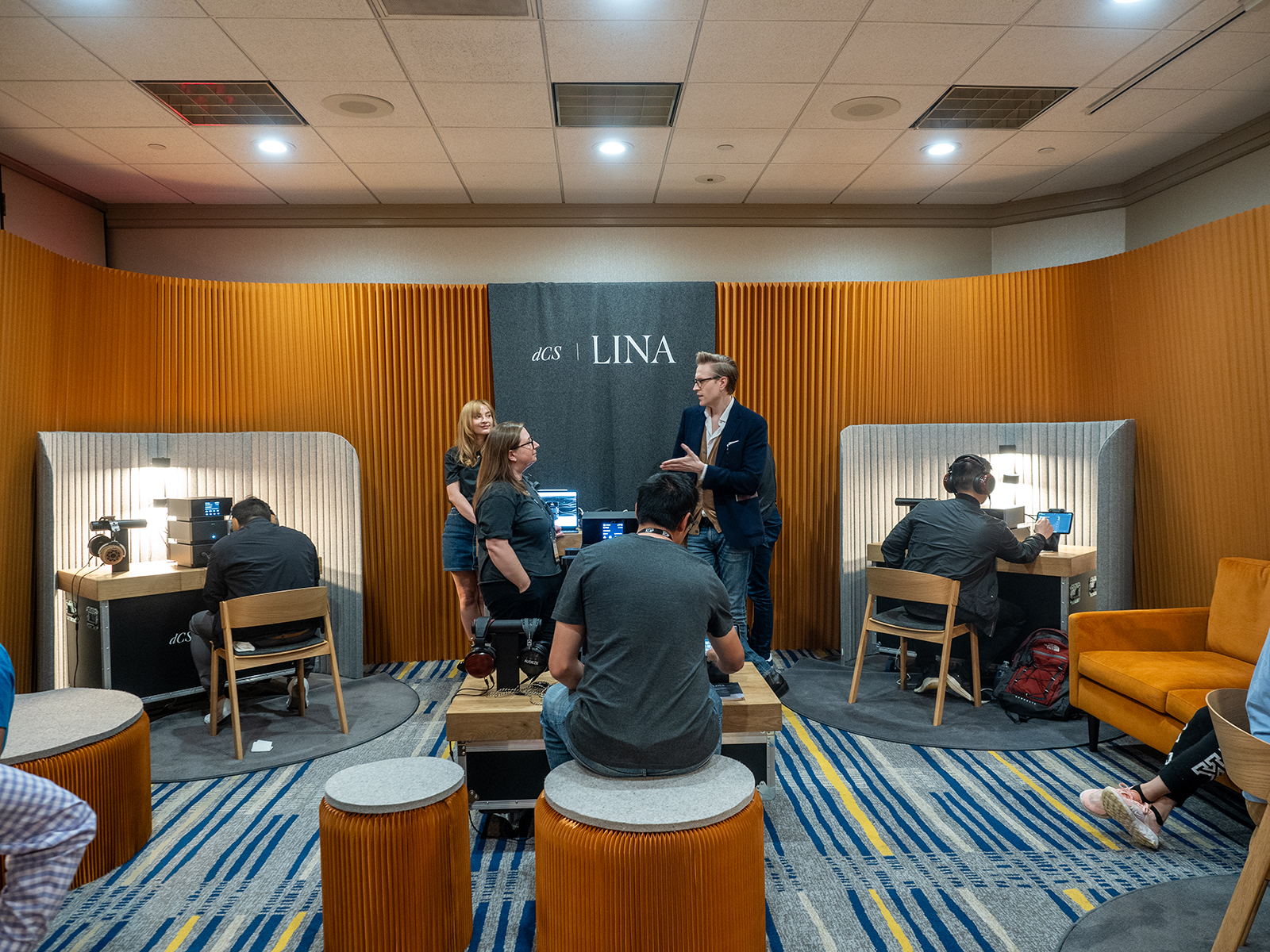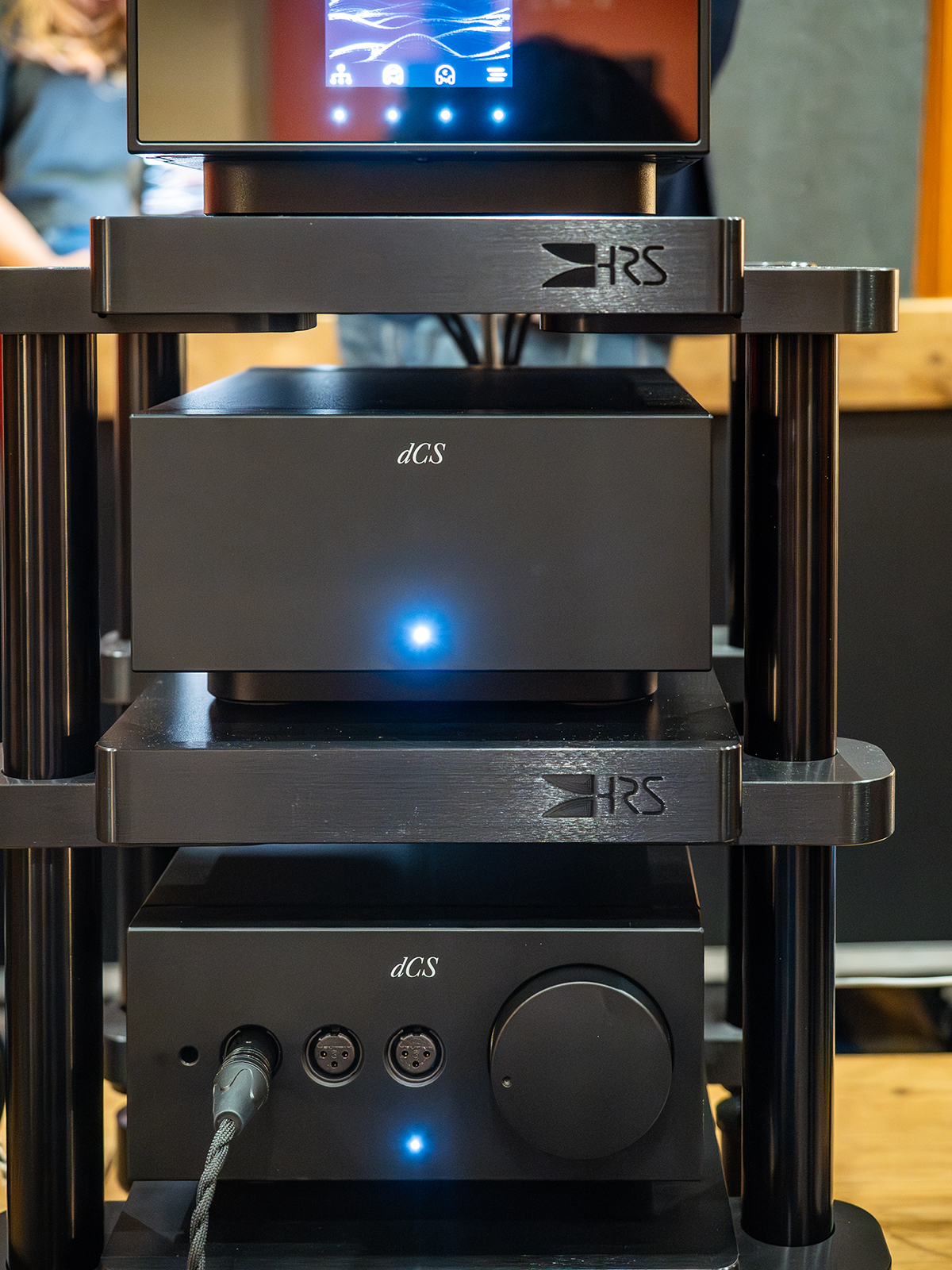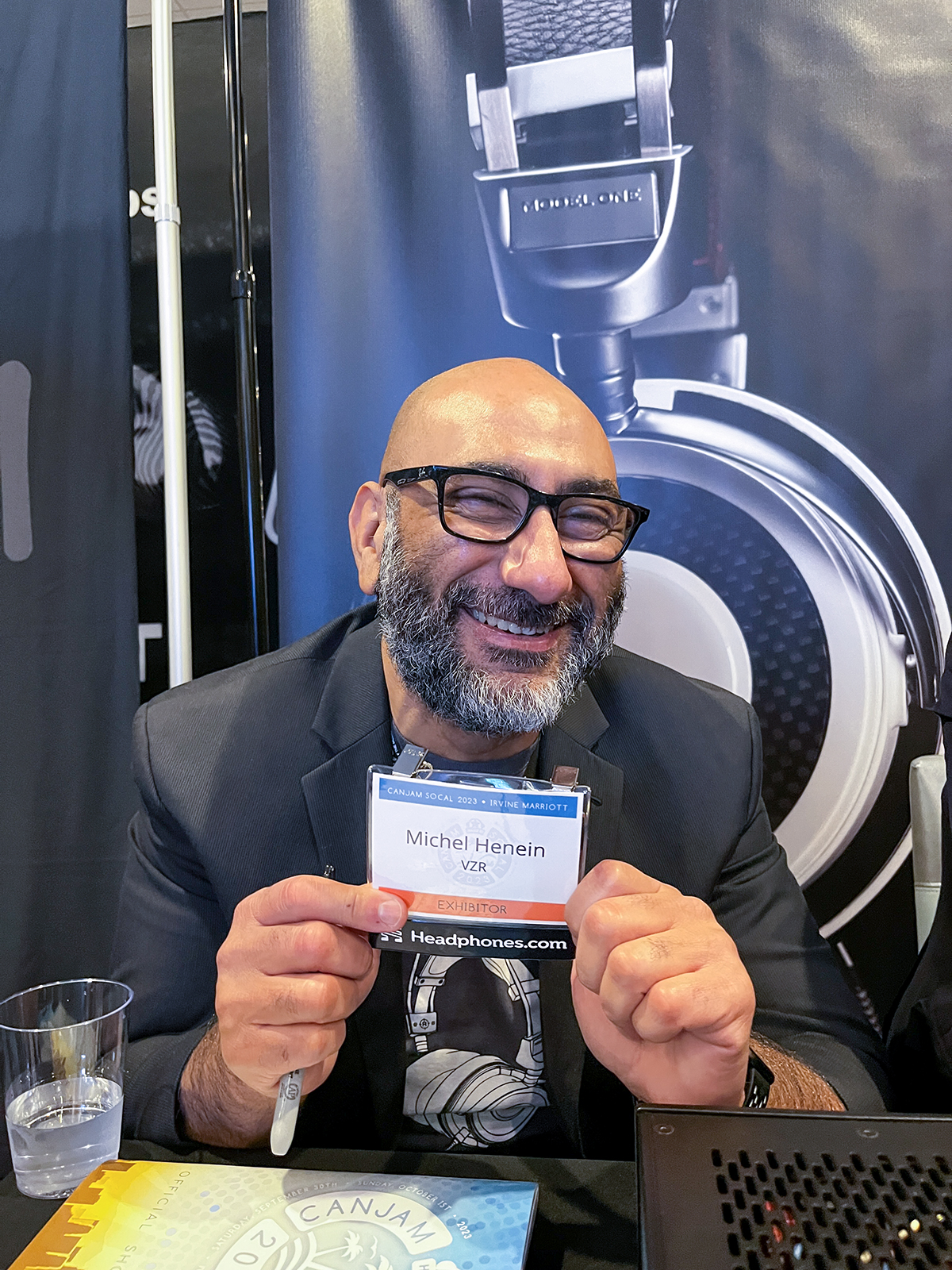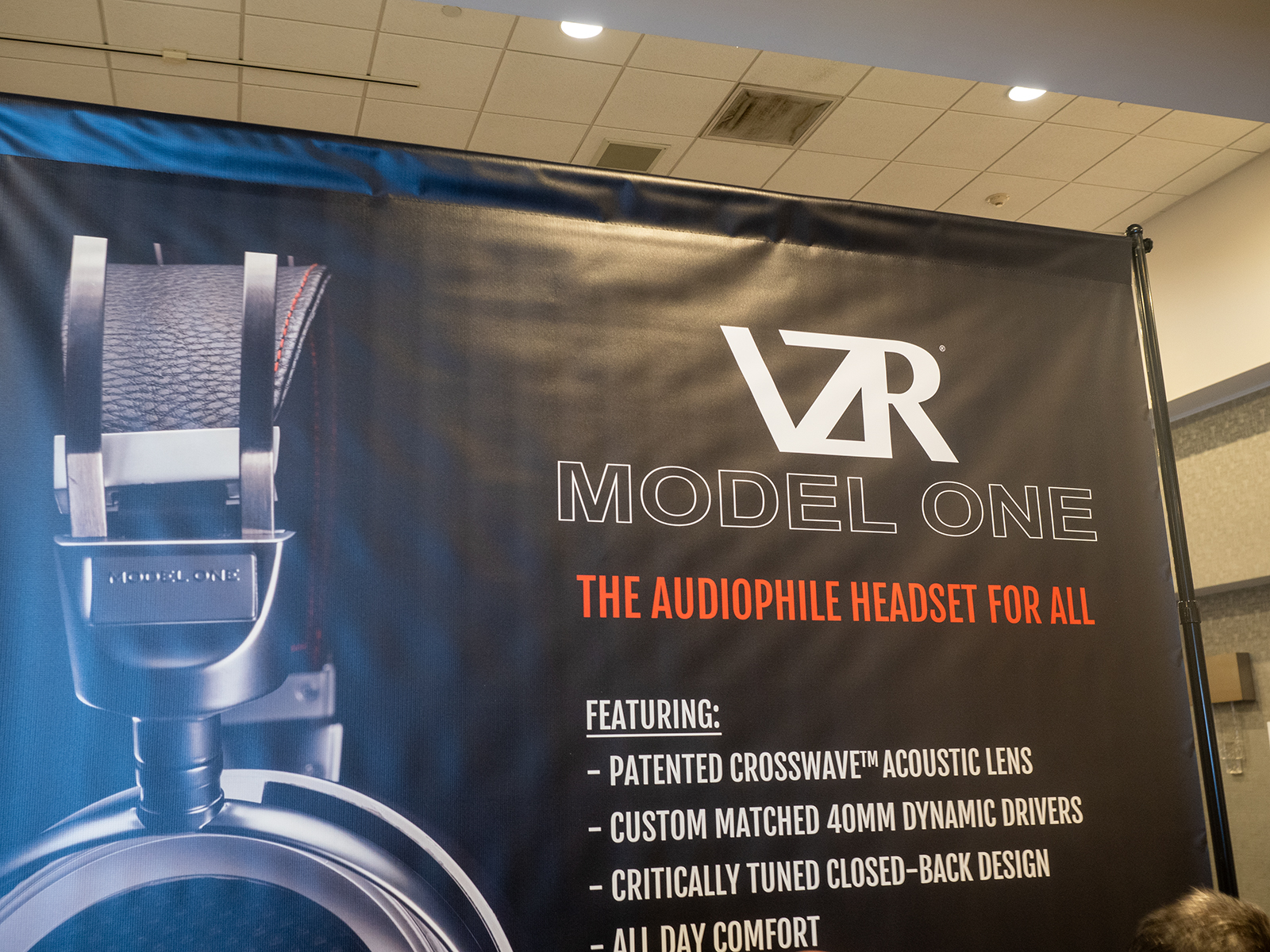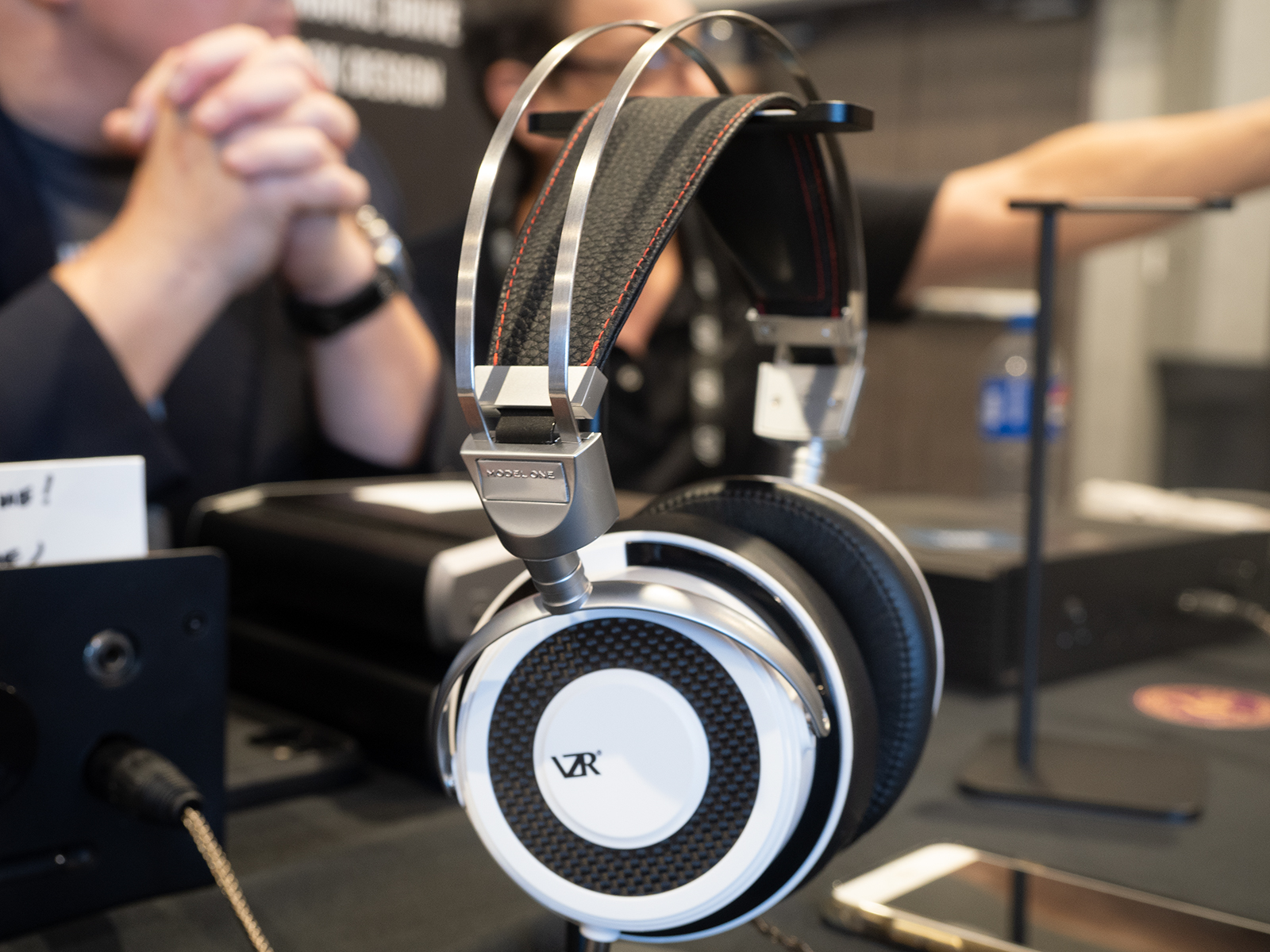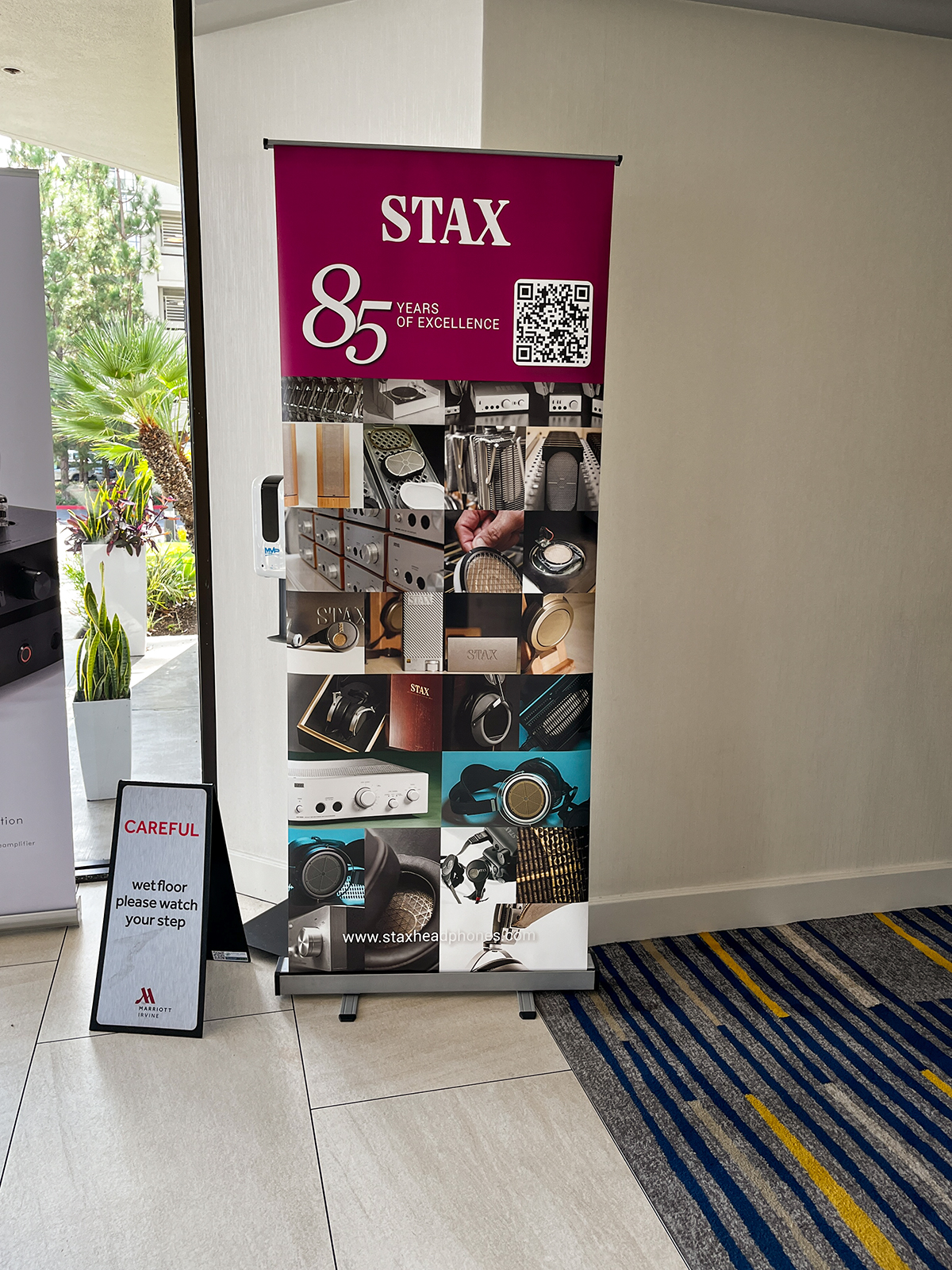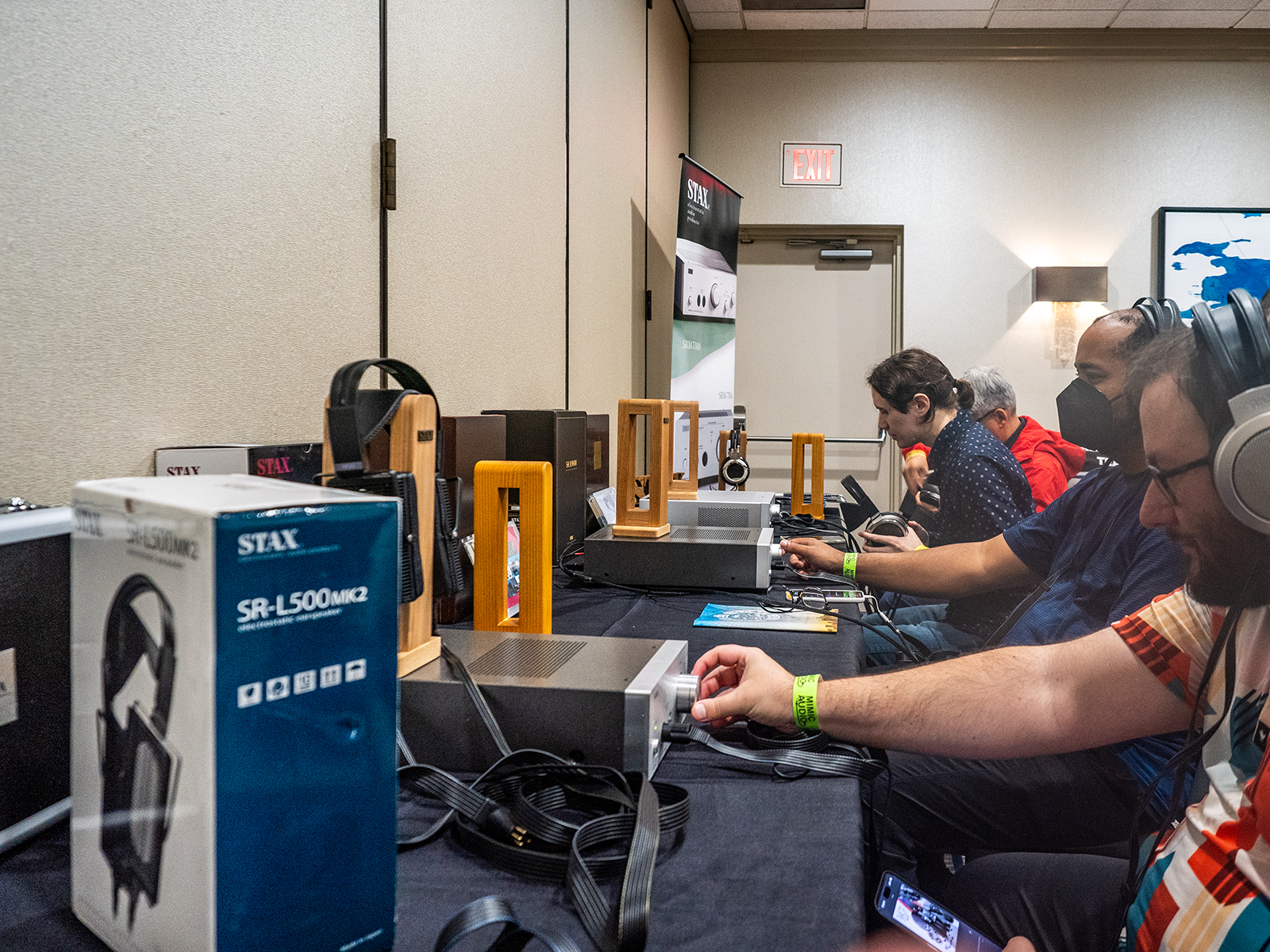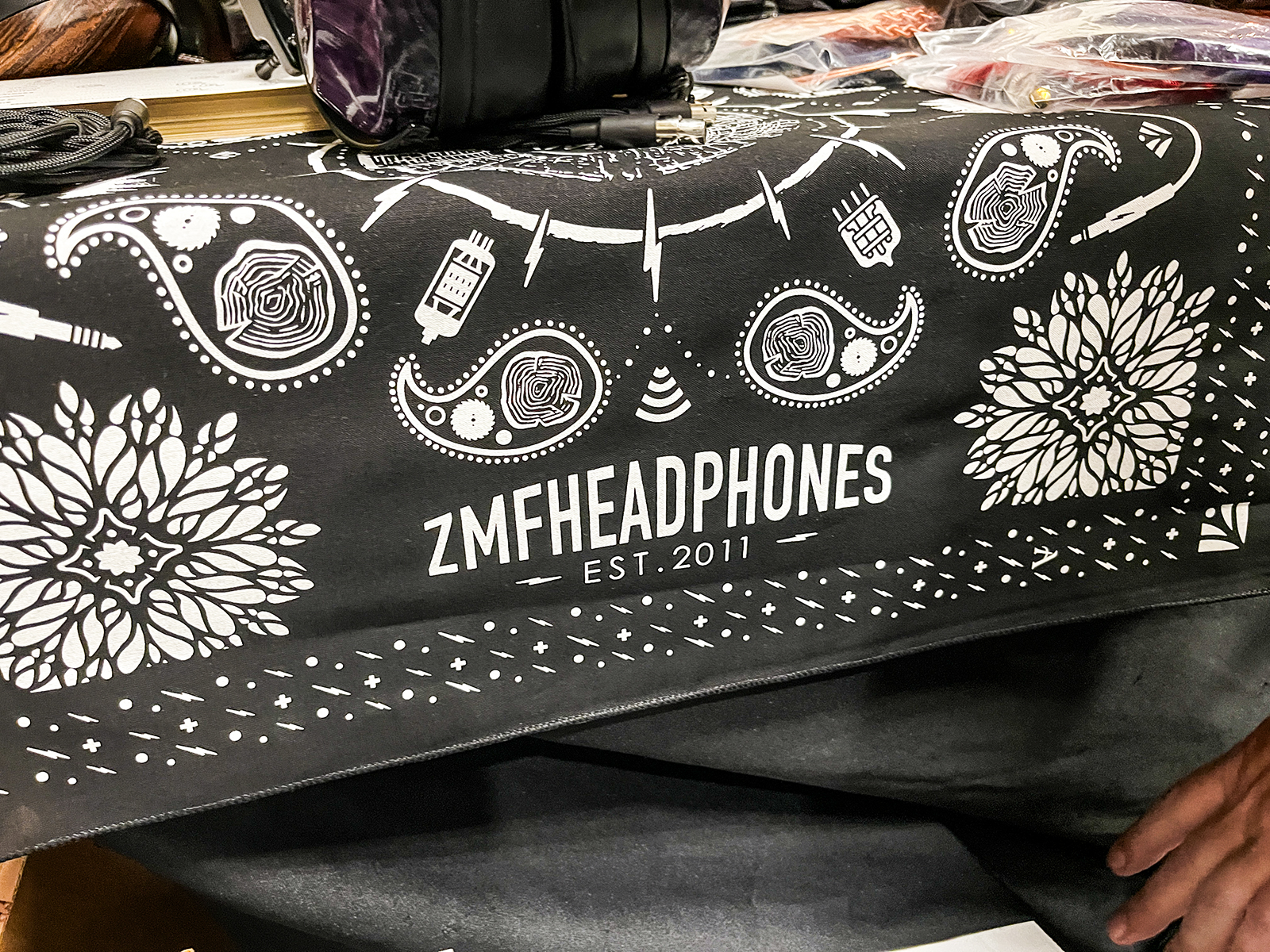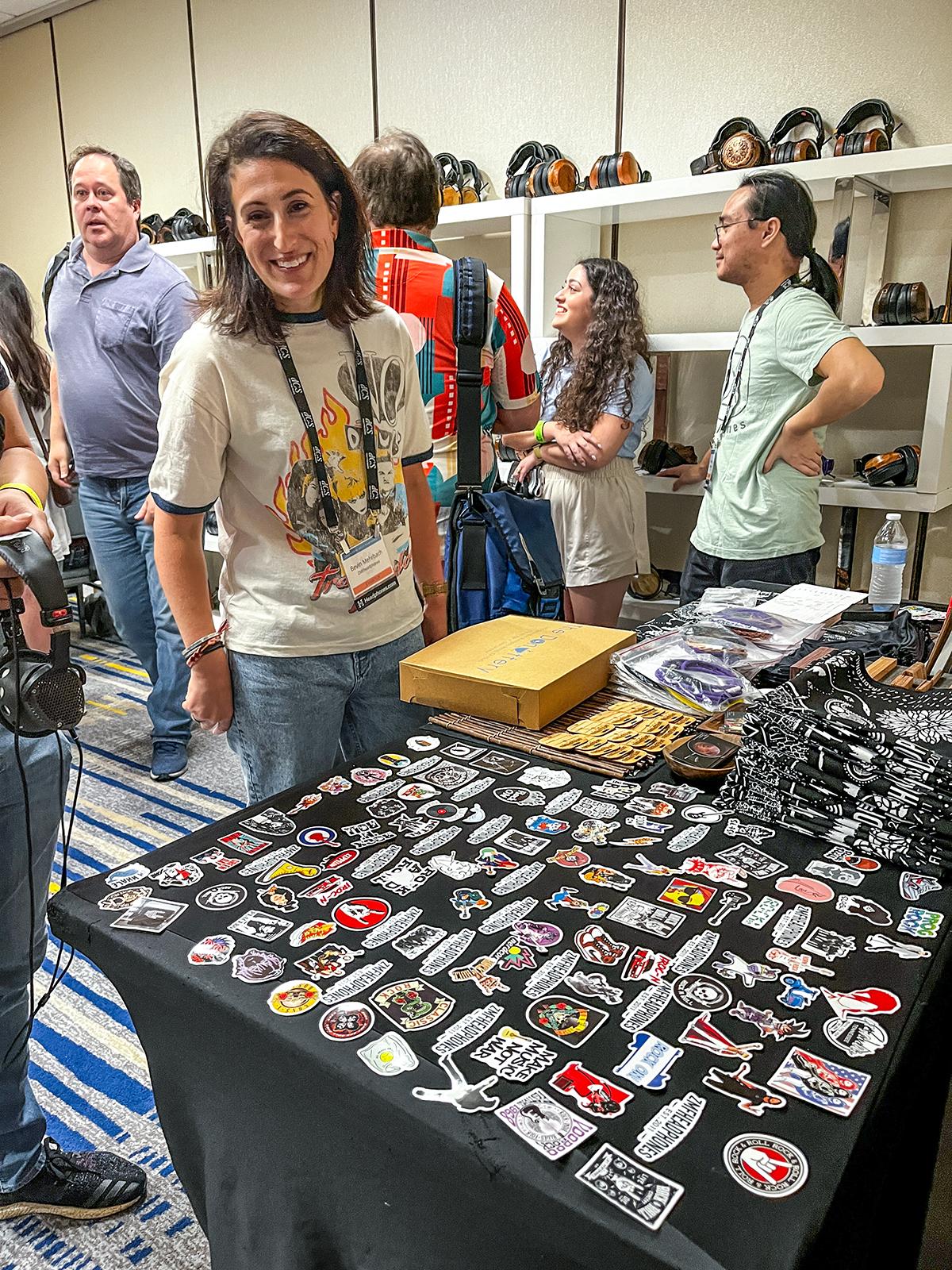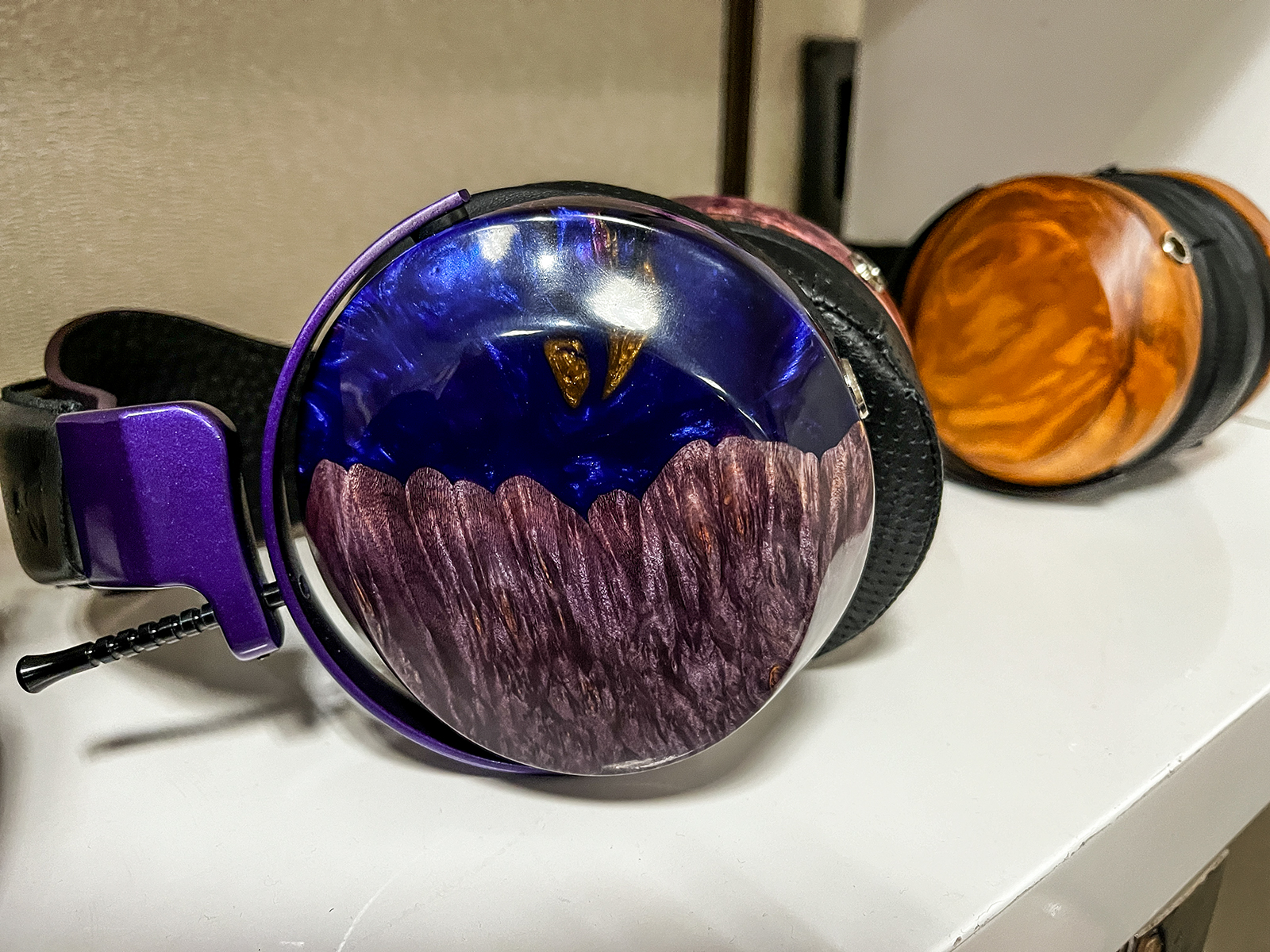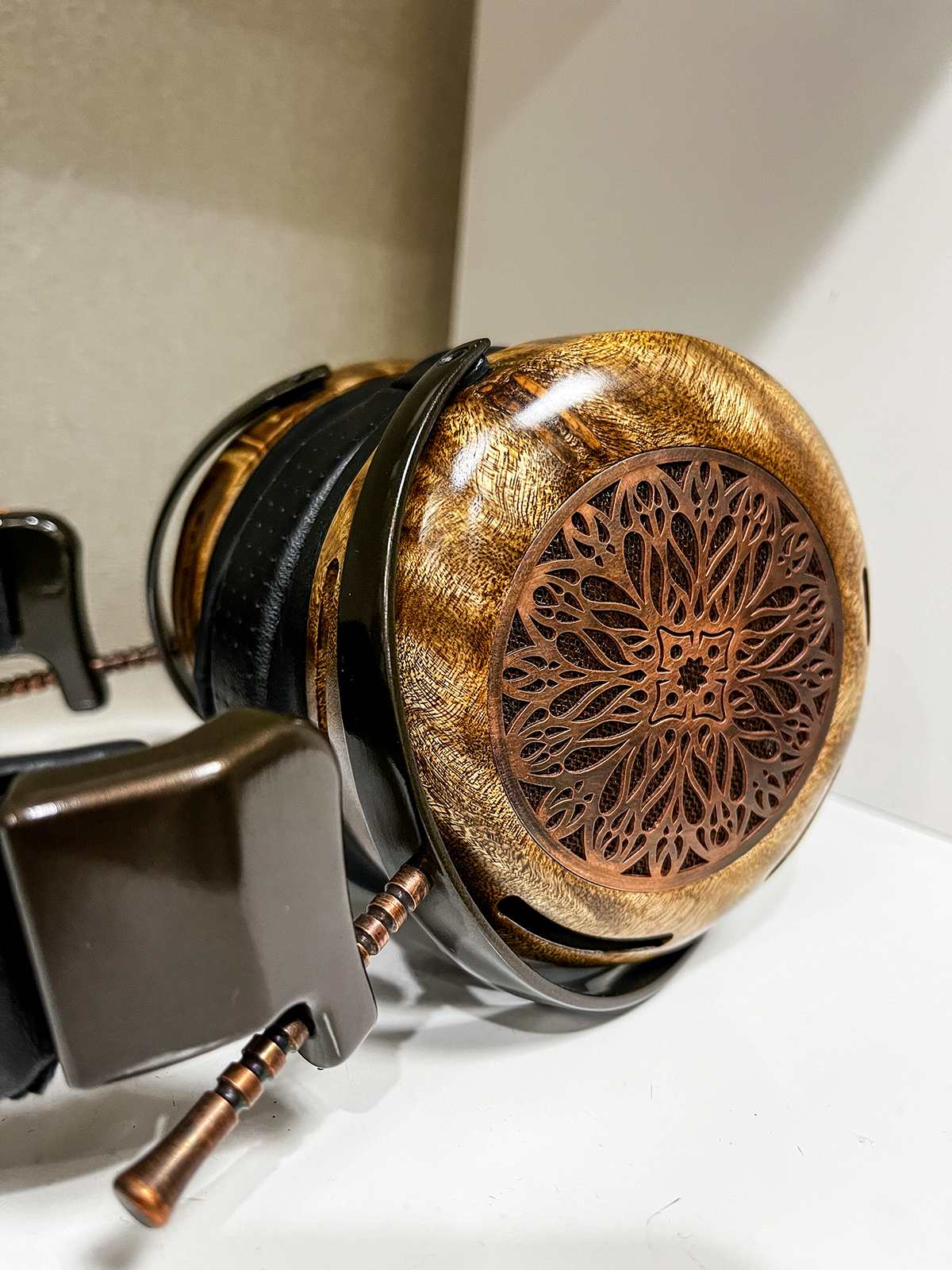SECRETS reviewer and resident “Headphon-ista” Lory Hawley gives us her report on the sights and sounds from CanJam SoCal, held from September 30th to October 1st in Irvine, California.
Last August I got a call from Carlo Lo Raso, our Editor-In-Chief, asking me if I would like to report on the CanJam SoCal 2023 show over the last weekend of September. My first impulse was to look behind me to see who he was talking to; he’s the pro, and I’m new to this world of writing and I’d never been to any kind of audio show before, much less one that was being touted as possibly the largest of the CanJams. I was honored and said yes before I could talk myself out of taking the challenge. I had just under two months to prepare. I got to work. I read previous reports on shows; read up on the exhibitors and began thinking about how to plot out a plan of attack. Carlo reminded me that it is my passion for headphones he is interested in and to let that guide me through what I saw and wrote about.
On September 29th I flew down from the San Francisco Bay Area to Irvine in Orange County. CanJam SoCal is held at the Marriott Hotel, which is about a 10-minute shuttle ride from John Wayne Airport. As I exited the airport, I was greeted by a 9-foot-tall bronze statue of the Duke himself, standing outside of the Eddie Marin Terminal. The weather was threatening rain, but it was warm and balmy. Palm trees graced the entrance to the Marriott, a beautiful setting.
My plan was to get settled in my room, lay out my notes and the CanJam program, and polish up my strategy for the two days. I was advised to drop by the exhibit hall that evening before the opening of the show, which is what I did. I walked around getting a feel of how it looked, where the companies were situated, and met some of the exhibitors. Most of the displays were draped in black cloth; mysterious shapes arranged in rows on the tables.
Warwick Acoustics
I saw a very cool-looking big booth being given final touches. I was greeted warmly by one of the two men working on the booth. He was director of marketing for Warwick Acoustics, Orazio Pollaci. Though he was clearly busy putting the last touches on their display, he graciously invited me to explore the soundproof pod. Closing the door behind me not only shut out the bustle of activity but the fact I was in a convention hall. Everything was bathed in warm, soft lighting. There were two headphone systems, one at each end of the table; on the left, the Flagship Limited Edition Black Aperio Headphone System (only 50 systems will be made in black), and on the right, the “entry-level” Bravura Headphone System. Both units were turned on and ready to go. Orazio and his teammate were busy, and I didn’t want to interrupt them to ask if I could give a listen. If I had known that this exhibit would have a long line the entire time of the show, I would have been bolder. Next time….
On the morning of the first day, I set my alarm early, so that I could go into the show before the 10 AM opening. A beautiful, palm tree-silhouetted sunrise set the tone for the day. I walked through the now bustling main hall to orient myself. The doors opened and a steady flood of attendees seemed to fill the hall within moments. I was curious to see who would be attending. My understanding is that the attendance at a headphone show is more diverse, in general than at a typical HiFi show. I would guess that, at least at this point, it was about 90% men of various ages. By the end of the show, I did see more women, and there were women exhibitors, which was a delight to see.
My general plan was to learn more about the IEM market since that is an area that I have the least experience in, and there were quite a few brands at the show. I learned, however, after a few failed attempts, that I have difficult ears to fit with ear tips. This was confirmed when I had an ear exam after I returned home. Though there were a couple of brands I had success in fitting well, so my report will be limited about listening to IEMs. All prices mentioned in my report are in U.S. dollars.
Audeze
I made my first stop at the Audeze table. I’m a fan of planar magnetic drivers, and I wanted to listen to these headphones which are engineered and handcrafted at their Orange County factory. They are so dedicated to developing every part of their headphones that they have become the largest flexible printed circuit board manufacturer in the U.S. and hold 9 U.S. patents so far. I listened to the LCD-x ($1,199.00) open-back planar magnetic headphones. They have 106mm planar drivers with 30 ohms and a sensitivity of 103dB SPL. They are highly efficient and can play from almost any device that has a headphone output. They weigh 612 grams, yet I found them comfortable and not too heavy. I played the Beatles’ “Within You, Without You” and I think I said “Wow” out loud. The soundstage was wide and deep. The tuning was warm and yet neutral. Great bass that provided plenty of detail and punch. I had to move on, but they left me wanting to hear more.
Focal-Naim America
Next on my stop was a visit to Focal. I was graciously greeted by Tom Graham, one of the Focal product specialists who guided me through the crush of eager fans. Focal was in the center of the hall and was packed the entire time I was at the show, so I was grateful for Tom breaking the waves for me. He started me on the wireless ANC closed-back Bathys ($800.00). I listened to the Bathys wired through the USB cable, as the Bluetooth in the hall was horrible, given the zillions of devices competing with each other. The Bathys handle both Bluetooth and wired, up to 24bit/192kHz resolution from a USB device that offers high-resolution streaming.
I listened to music from the hand-built Naim Uniti Atom Amplifier Headphone Edition ($3,799.00). Naim is a 50-year-old English company that Focal acquired, and they have a wonderful synergy that makes the Naim streamer a perfect complement to the Focal line. The Bathys had dynamic bass and nice mids, especially with female voices, and somewhat recessed highs, though I couldn’t give them the time and attention they deserved. They were comfortable, light, and fit well, and the ear pads were sumptuous. I could easily wear them for several hours.
I gave a listen to the Stellia ($2,999.00). These are closed-back with a dynamic driver with a pure Beryllium dome. They were comfortable from the moment I put them on. The passive noise cancelling worked well, despite the noise all around me. In general, the noise level and surging mass of bodies in the large hall impacted my ability to really listen closely. The rooms off to the side of the main hall were refuges where it was much easier to sit down with a pair of headphones and listen and enjoy what they had to offer. I finished up with the open-back circumaural Clear Mg ($1,499.00). I wanted to hear what the Focal open-back sound was all about. I listened to Lady Gaga sing “Plastic Doll” from the Barbie movie. Great, clear bass and her voice shimmered. Wow, these were lovely; light, and comfortable and the micro perforated ear cushions were lush and would probably be comfortable for hours of wearing.
HEDD Audio
As I wandered around exploring the hall the night before, I met Dr. Frederik Knop, who, with his father, Klaus Heinz founded HEDD Audio in 2015. He was charming and welcoming and invited me to come back the next morning to give a listen. Dr. Knop was showing the HEDDphone Two ($1,999.00) which is the result of three years of R&D after their HEDDphone One debuted. These are smaller and lighter than the previous HEDDphone and the drivers are the newest evolution of their Air Motion Transfer (AMT) electromagnetic transducer driver.
I did return, and they were my next stop. I put on the open-back rectangular headphones and listened to the Eagle’s Hotel California. The tight bass had punching power. The treble was clear and bright, and the precision and airy detail were almost clinical, which makes them perfect for studio use. These hand-made headphones are so solidly constructed that they have a 5-year warranty. The padded suspension system for the headband included sophisticated adjustable straps, however, I couldn’t shorten them enough, and they were a bit too big for me. In fairness, I didn’t use the strapping system to custom-fit them. The HEDDphone Two had one of the most transparent, highly detailed, and crisp presentations of music I heard at the show.
Brüel & Kjaer
Taking a breather from so much glorious audio, I found the location for Hottinger Brüel & Kjaer (HBK). I had to stop by the HBK booth to see what was behind the cool “Green Man” poster I kept seeing. I met Vince Rey, who explained that they are the folks who provide advanced instruments and test equipment, as well as software to the industry. The nerdy girl in me stayed way too long as I was shown several instruments and mics. The image of a cut-away of the human ear on one monitor gave me a philosophical moment of pondering the fact that every audio device at the show, no matter how modest or sky-high in price, ultimately was processed by this fleshy human instrument.
Ice Lab
I decided it was time to look at some IEMs, so I headed over to the Ice Lab table. The Hong Kong-based producer of IEMs and upgrade cables was one of my first stops on my quest to explore IEMs. Their cables were beautiful as were the IEMs. However, I found the sound to be too bright and lacking bass. In fairness, this was before I realized that most of the IEMs were going to sound that way because of my hard-to-fit ears. They have a great reputation for high-end products, so they deserve another listen.
Noble Audio
Speaking of the science of fitting IEMs, I visited Noble Audio. This Texas-based family-owned IEM company dazzled me with the sheer beauty of their handcrafted IEMs. The rich colors and designs reminded me of enameled jewelry. Jim and Fumie Moulton, who are co-owners along with his brother, John, were hosting at the table. Jim gave me the background on how the family, who were originally not in the audio business, but rather in Audiology and Law, found themselves at the forefront of innovation in the world of IEMs. The idea for the designs came from Dr. John Moulton who was an Audiologist. He found the beige color of all hearing aids in need of some beautifying. He started playing around with an old jewelry box, cutting it into pieces, and got the idea for brightly colored IEMs. In 2014, he and his brother Jim started Noble Audio. They continued to innovate and were the first to put 10 drivers in each earpiece, which started a driver race in the IEM world. Their first IEM, the K10 got 5-star reviews. They now produce both universal and custom-fit IEMs, and everything is made in Texas. They offer a pick-your-material design that allows for a custom look and is the only company that offers those design choices.
HIFIMAN
Next, I was off to visit the HIFIMAN table, as I am currently reviewing one of their headphones. I was greeted by Adam Sohmer and Roger Fortier, who greeted me like a long-lost family member, as they know the Secrets team well. They had many of their headphones and DAC/headphone amps on display. I wanted to listen to everything, but the crowd was several people deep, so I limited myself to what I was most curious about, and that was their two newest IEMs, the wired Svarna ($1,999.00) and the wireless Bluetooth ANC Svarna ($499.00).
I wanted to listen to the over-ear Susvara ($5999.00) that Secrets had recently reviewed, and I am currently reviewing the HIFIMAN Arya Organics ($1,299.00). I did look at the EF600 R2R ($799.00), the tall desktop DAC/headphone amp, that also serves as a headphone stand (very cool) as it was driving the Arya Organics. It was simple in its design, full-featured, and didn’t take up much tabletop real estate. The wired Svarna headphones were stunning in their clarity, depth, and width of soundstage. I didn’t want to put them back on the table.
I spoke with Dr. Fang Bian, the founder of HIFIMAN about the wireless Svarna. I asked about the Bluetooth and the fact that the Svarna has LDAC, AAC, and SBC. We talked about how only Android uses LDAC, and not my Apple iPhone. I asked if he felt there was much of an advantage to LDAC compared to my iPhone’s AAC. He gave a very strong yes and led me to a quiet place away from the horrible Bluetooth interference on the main floor and proceeded to give me a demo. First, he had me listen to the wireless Svarna with my iPhone. I thought they sounded amazing; so much detail… then we switched to his Android phone, and I listened again. Damn! There is a difference. The warmth and depth increased, and the detail rivaled the wired Svarna’s. I got the sense from him that I should switch immediately from my iPhone to an Android to fully appreciate all the beauty these wireless Svarna had to offer. All I can say is “Apple, make friends with Sony so that we can have LDAC along with AAC”. Dr. Bian also pointed out that Bluetooth is only a small part of the Svarna wireless, and that most of what makes them special is all the analog that results from the proprietary R2R DAC, the amp and preamp contained within each earpiece.
Sennheiser
Sennheiser was right next to HIFMAN, so they were my next stop. Founded in 1945, Sennheiser, which to this day is a family business, is one of the leading manufacturers of headphones, microphones, and wireless transmission systems. My first headphones, back in the early 70’s were the Sennheiser HD414, a yellow foam, open-back model that was my introduction to the joys of headphones. I reflected on this humble beginning when I was invited by Eric Palonen, a Sennheiser audiophile specialist, for a private session with the HE 1 ($60,00.00), the mythical electrostatic, tube amplifier-driven, evolution of its predecessor, the electrostatic Orpheus HE 90/HV 90’s, which made its debut in 1991, and is still considered one of the best headphones in the world. I was ushered into a private room for a luxurious 15-minute listen. What I saw was a big block of Carrara marble with knobs and two black boxes sitting on top. Eric pressed the remote once, and the lid of the bigger box slowly opened to reveal the headphones nestled within, while the amplifier tubes slowly rose out of the smaller box. Eric handed me the headphones. He mentioned that they are hand-made and cover an ultra-wide frequency range of between 8Hz and 100kHz with a distortion level of just 0.01 percent at an SPL of 100dB. The ear pads, which were leather and velour, seemed to float on my head while providing solid clamping pressure. I listened to several songs that Eric chose to highlight the headphone’s ability to shine from the deepest bass to the most delicate highs. I think the HE 1’s redefined wide soundstage, holy cow!
I also spent time at the Sennheiser table where they had headphones made for mere mortals. I was intrigued by the HD 820 ($1,999.95). Though closed-back, they are designed to appeal to those of us who prefer open-back. On the outer ring of the headphones is a concave Gorilla glass reflector which directs wide, spatial sound, back to the ears. They have a 56mm driver and an impedance of 300-ohms. I was impressed. The bass was huge but clear, and the sound was smooth and detailed, without the closed-in sensation I find with many closed-back cans. They did sound closer to an open-back headphone than I thought possible. I also gave a listen to the HD800S ($1,799.95) which are open-back and shares the same 56mm driver and 300-ohm impedance. My notes say “Ahhhh, what an open and easy sound; impressive, natural and wide.” I wanted to keep them. I also listened to two of the wired in-ear headphones; the IE 200 ($149.95) and the IE 900 ($1,499.95). They both have a comfortable over-the-ear curve to the cable which provides a secure fit. I was delighted to find that both models rested in my ear perfectly and I didn’t have the issue of the poor-fitting ear tips of other IEMs. The IE 200 had a clean, clear sound that was impressive for its price. Then I tried on the IE 900. Wow! A huge leap to a big warm sound with great detail. The easy fit, and comfort, paired with the beautiful sound signature, made these a find for me.
Campfire Audio
Next was a visit to Campfire Audio, founded in 2015 by the friendly folks from Portland OR. They choose the name to reflect their folksy, Oregon down-home style. The company is a collection of musicians, engineers, and artists. The colors of their beautiful display called to me from across the room. They had several IEMs and a collection of various cables which range in price from $79.00 to $999.00. The IEMs are 3-D printed resin and shaped to fit the ear. Different models have different tuning. They can make a custom fit from a scan or impression from an Audiologist, or there is a wide selection of universal fit IEMs. They use acoustic dampening with analog material rather than electronics. I gave a listen to both the pink Bonneville ($1.399.00) which has a 10mm Dynamic Driver and three balanced armatures, and the Blue Cascara ($499.00) which has a full-range dynamic driver. I found them to be analytical and clear with great detail, and, like their name, I found inviting warmth as well.
T10 Bespoke
In the crush of the mostly monochrome attendees, a brightly colored outfit caught my eye. It was Bear Clark, the creative design force behind T10 Bespoke, the custom-made luxury audio jewelry and IEMs made in collaboration with Klipsch. I was pulled like a moth to the flame as I pushed my way through the crowd. I was mesmerized by the gold, hand-carved charging cases, with matching IEMs, along with beautiful beads and jewels. I felt like I was transported to a palace in India. I can say there was nothing else at the show quite like the T10 Bespoke booth. Bear Clark is an engaging showman who also happens to be a gifted artist who works with a collection of “musicians, artists, geeky engineers, software nerds, and fashionistas” in a historical building in a small town in Kansas. If Dorothy, in The Wizard of Oz, had this company near her aunt’s farm, she may have stayed in Kansas…and still met the wizard. I found the playful energy at T10 Bespoke a refreshing place to stop and be inspired.
T+A
On to T+A, a German company based in Berlin, which makes audiophile equipment including turntables and amplifiers as well as three models of headphones: the open-back planar-magnetic Solitaire P ($6,900.00), open-back planar-magnetic Solitaire P-SE ($3,900.00) and the closed-back Solitaire T ($1,600.00), a wireless ANC dynamic driver headphone. Listening to the Solitaire P, my first thought was that these would shine with electronic music. They had a punchy bright clarity that was lively and enjoyable. Both the Solitaire P and the P-SE headphones shared a focused, precise soundstage, though the Solitaire P was capable of much more powerful bass. The Solitaire T though wireless, could also be enjoyed as wired through their USB-C socket.
Meze Audio
Sticking to a European theme, I headed to Meze Audio. This Romanian headphone developer was near the top of my list of “must-sees”. I had heard so much about the beauty of the headphones and the vivid, engaging sound that was almost mythic, I wanted to make sure to give them a listen while my ears were fresh. Everything about the headphones exceeded my expectations. I started with the closed-back Liric, ($2,000.00). These are 30-ohm easy-to-drive portable headphones. They were lightweight and extremely comfortable with a unique headband structure that had a wonderful Steam Punk look to them. The sound signature was one I found carried through to the Planar Elites ($4,000.00) and open-back 109 Pro ($799.00). The bass was tight and musical and the mids and highs were warm and rich, yet detailed. Sigh…I was sad to hand them back. A highlight of the show without a doubt.
Dekoni Audio
Taking a break from listening, it was time for looking. I headed off in search of amplifiers, and the miscellaneous accessories that support our listening pleasure. First was Dekoni Audio who make replacement pads for headphones and memory foam tips for IEMs. Upgrading the stock pads on headphones to Dekoni earpads can elevate the sound. They had a chart that had an ongoing vote by people who placed a sticker next to the name of their favorite Dekoni model of earpad. The chart showed how the sound signature could be changed by the material of the pads. They also had headphone wipes and headphone adapters. I would have loved to explore all the foam tips they had. Perhaps that would have solved my IEM poor fit dilemma.
Chord Electronics
I made a stop at Chord Electronics. This British company makes streamers, DACS, amplifiers (even mono), integrated amps, preamps, and more. What I wanted to see, but missed at the show, was the newly announced Mojo 2 ($650.00) and, what some say, is the most advanced mobile DAC/headphone on the market. The Mojo 2 is designed by the legendary British engineer Rob Watts and has every feature and the power to drive almost any headphone. Like all current DAC/headphone amps, it is USB chargeable. What is it about the British? Everything I saw from the Brits was beautiful, and refined, yet built like a tank.
Feliks-Audio
Leaving Chord Electronics, I passed the Feliks-Audio display. “A feast for the eyes” is what I wrote down as I admired the Feliks Audio Envy, price $7,995.00. The Class A balanced desktop tube headphone amplifier was, quite simply, one of the most beautiful objects at the show.
EarMen
One of my personal goals for the show was to learn about dongle/DACs. Though I love my Audioquest Dragonfly, there were times when I needed more power than they offered. So, I paid a visit to EarMen, a U.S.-based company located in Chicago with award-winning DACs and headphone amps designed by Auris Audio, a high-end company based in Serbia. EarMen started out developing tube amplifiers for more than a decade before branching out to reach a larger audience with desktop, portable, and dongle DAC/amps for headphones. I was so impressed with their self-powered dongle DAC, the Colibri, that I asked if I could review it (the answer was yes, so stay tuned). The focus of EarMen is to serve the wired headphone market with small, powerful DAC/amps that allow the portable use of headphones whose impedance would overwhelm many other portable DAC/amps. Though based in the U.S. for ease of customer service, all EarMen products are manufactured in Europe to ensure the highest standards of production. The Colibri dongle/DAC ($249.00) is, in my opinion, a bargain for a fully balanced 4.4mm output, battery-powered DAC/amp/preamp about the size of a lighter.
Fiio
Another find at the show was Fiio Electronics Technology Co., a company whose focus is on R&D and development of portable music products (I think I see a trend here; my personal interests are expanding to include all things portable). They also produce home audio products.
Two things caught my eye: a portable dongle DAC/amp, the KA2 ($59.99) with balanced 4.4mm out and Hi-Res audio, and an over-the-ear, open-back High-Res headphone called the FT3 ($299.99). This has a 60mm dynamic driver, a beryllium-plated gasket, and has an impedance of 350 ohms. Wow! They mean business. The headphones come with two pairs of earpads and four sizes of audio plugs. I put them on, and they were light, and the suspension headband was adjustable enough to fit my smaller head. After listening to headphones costing into the thousands, I think I was getting a little snobby, as I didn’t expect much from these modestly priced cans. I was wrong. I brought up Hotel California to see how they handled both the sparkling, detailed guitars as well as the chest-thudding drums of the opening. I was almost startled by how huge and clear the music was. Some of the upper notes were a little too bright for my taste, but a bit of equalizing could probably round that off. In my opinion, those Fiio FT3s were one of the finds of the show. How they do this for $299.00 is impressive.
The table also had an extensive collection of some of their other products; several models of tiny USB dongle/DAC’s including the JadeAudio KA13 ($89.99), a 32bit/768Hz DSD512 capacity DAC and amp with both 3.5 and 4.4mm dual headphone outputs. I didn’t try it out, but the manufacturer claims they can drive a wide variety of headphones. They also had a flagship version, the KA5 USB DAC/amp with more features ($129.99). They also had a high-end portable desktop-class music player called the M17 ($1799.99).
dCS
To close the day, I visited dCS, builder of a high-end trio of gorgeous electronics. Elegant and understated, the LINA music playback system was in the most serene and quiet room of the show. I found myself whispering when asking questions. They had three components which can be purchased as separates or together as one system.
Network Streaming DAC ($13,650.00)
Master Clock ($7,00.00)
Headphone amp ($9,750.00)
There was a DAC, headphone amplifier, and Master Clock stacked and attached to a ZMF open-back cherry-wood clad Atrium headphone ($2499.99). The feel of the metal finish on the units was silky and refined. The volume control was a large dial, with just the right amount of resistance for precise adjustments. The headphone amp was set for 50-60 ohms to play the Atrium’s, but they can be set to handle any headphone.
Day one drew to a close, and so did I… it was early to bed to let my overheating brain cool down. Phew!
Day two was a half day for me, and I had a few special stops left on my list.
VZR
The first was to visit the booth of someone I had chatted with on the shuttle ride from the airport. He handled public relations for a gaming headphone company called VZR. The two co-founders of VZR are passionate devotees of binaural and spatial audio sound. Since binaural recordings are one of my enjoyments, I dropped by their table to chat about their first gaming audiophile headphone, the VZR Model One ($349.00). There was major horsepower at that booth. Vic Tiscareno, co-founder, and CEO formed Red Rose Music with Mark Levinson to produce critically acclaimed speakers and amplifiers. One of Vic’s customers was a young man named Steve Jobs who recruited Vic to create and lead an audio research laboratory to improve the acoustical quality of Apple products. He was the principal engineer for the development of the ubiquitous iPod and iPhone headphones among other projects.
Michel Henein, co-founder, has over 20 years of both film and game audio production and began his career at Hans Zimmer’s Media Ventures and Remote-Control Production, which led him to the world of games and the building of a sound studio for a gaming company. He went on to lead the development of 3-D audio products. I mention these details because this collection of expertise and gravitas has resulted in what they consider the first truly audiophile-quality wired, closed-back gaming headphones. They have developed a special driver designed to focus sound spatially to precisely position sound effects in games, which they feel has been lacking with other gaming headphones. I listened to a binaurally recorded Pink Floyd track and I can testify that they succeeded in creating a three-dimensional sounding headphone with robust bass and detail.
STAX
I had a special stop for me, personally. I wanted to make sure my ears were still fresh, and I wanted to take my time, so for my second stop, I headed down the hall to Stax Electrostatic Audio. These legendary Japanese handcrafted electrostatic headphones were on my “must-see” list. I had a conversation once with a well-known speaker designer, and I asked him if he listened to headphones. “Not that much,” he said, but, when he did, they were his Stax. Now that I have listened to them, I know why. Stax was set up in one of the smaller side rooms which was crowded, but somehow serene; like being in a meditation hall. The tables were lined with both various models of headphones, and the drivers required to energize them. Stax refers to their headphones as “Earspeakers” as they feel they produce such ultra-high-fidelity reproduction of music that they have more in common with loudspeakers. These headphones are hand-built by a few highly trained technicians who apprentice for years with the senior designer who is now 75 years old and oversees the building of each headphone.
I sat in front of a pair of SRL500 MK2s ($830.00) that were driven by the compact SRM-D10 ($945.00). I plugged my iPhone into the amplifier and played the piano and cello version of “Carolina” from the movie “Where the Crawdads Sing”. I think my jaw dropped; I was speechless when asked what I thought. I had goosebumps. The clarity, realism, and transparency were something I hadn’t experienced before in headphones. As I listened, I had tears in my eyes; that was a first. The sound shimmered. If someone is a fan of heavy-pounding bass, these aren’t for you, but for everyone else? All I can say is listen to them if you’ve never heard them.
ZMF Headphones
My final stop of the day was to ZMF headphones. It seems fitting to bookend the show with one of the most popular rooms at CanJam. From the moment the doors opened, ZMF headphones had the lively, boisterous feel of a party. I noticed an animated dark-haired woman holding court and it was Bevin Merhrbach, co-owner and partner of Zach Mehrbach, founder, President, and designer of the headphones. Bevin clearly had control of the crowd while being gracious and patient and was constantly re-organizing and replenishing the fun stickers arrayed on the table. I then turned to the shelves which held beautiful wood headphones; the variety of woods and designs was breathtaking. The use of wood came from Zach’s early days of hand-building acoustic guitars and reflects Zach’s desire that these headphones will be kept and cherished as heirlooms.
I listened to a pair of Verité ($2,499.00) 300-ohm open-back headphones and listened to “Bubbles” by Yoshi Horikawa, one of the best songs with which to test headphones. The Verités had amazing detail and punchy bass. The Beryllium driver is inset deeply to provide resonances and the natural decay of a music hall, according to the literature. The Sapele wood cups have a beautiful mahogany finish. I thought they might be too heavy, but the headband suspension system did a good job of distributing the 500 grams of weight. I wish I could have listened to a few of the other models, but the line kept growing behind me, so I relinquished my seat. I would like a chance to listen again, as these Verité’s were the only ones with the recessed drivers, and it would have been interesting to hear about the differences between the other models.
After the delights of the ZMF room, it was a race to pack and leave for the airport. My brain was filled to overflowing and a bit numb, but I was inspired by the levels of perfection I saw and heard, and just as importantly, the new friends I made who made sure my first visit would be memorable. Thanks to all.
Finally, I would like to give a shout-out to the Irvine Marriott for going above and beyond to make sure my first show went well. On Sunday, though check-out was at 11:00 AM, knowing how stressed I was about not having access to a room where I could run to top off various batteries or take a quick break, the staff let me keep my room until 2 PM. Their kindness was genuine, and I give them a big “thank you”.


